
© Gareth Jones
Journeys through the Tate Collection
Explore more than 80 works from the Tate collection for free
This display of art from the Tate collection considers the impact of the global movement of people on artists and art movements throughout the twentieth century and beyond. On display are works that explore themes of migration, colonialism, and international exchange, and how they are relevant to the history of Liverpool.
Visitors can expect to see works by artists including Anish Kapoor, Sonia Boyce, Chen Zhen, Njideka Akunyili Crosby and György Kepes.
Highlights include Hew Locke’s Armada 2019, a large-scale flotilla of boats and rafts suspended from the ceiling. The sailing vessels hold complex and multiple meetings, symbolic of colonial and post-colonial power as well as the artist’s own movement to and from Guyana as a child. Also on display is Mona Hatoum’s Measures of Distance 1988 which speaks of exile, disorientation, and a tremendous sense of loss the artist experienced as a result of separation caused by the war in Lebanon.
By exploring works like these, and how they resonate with local and global history, we can consider the relationship between Liverpool and the world that it looks out on.
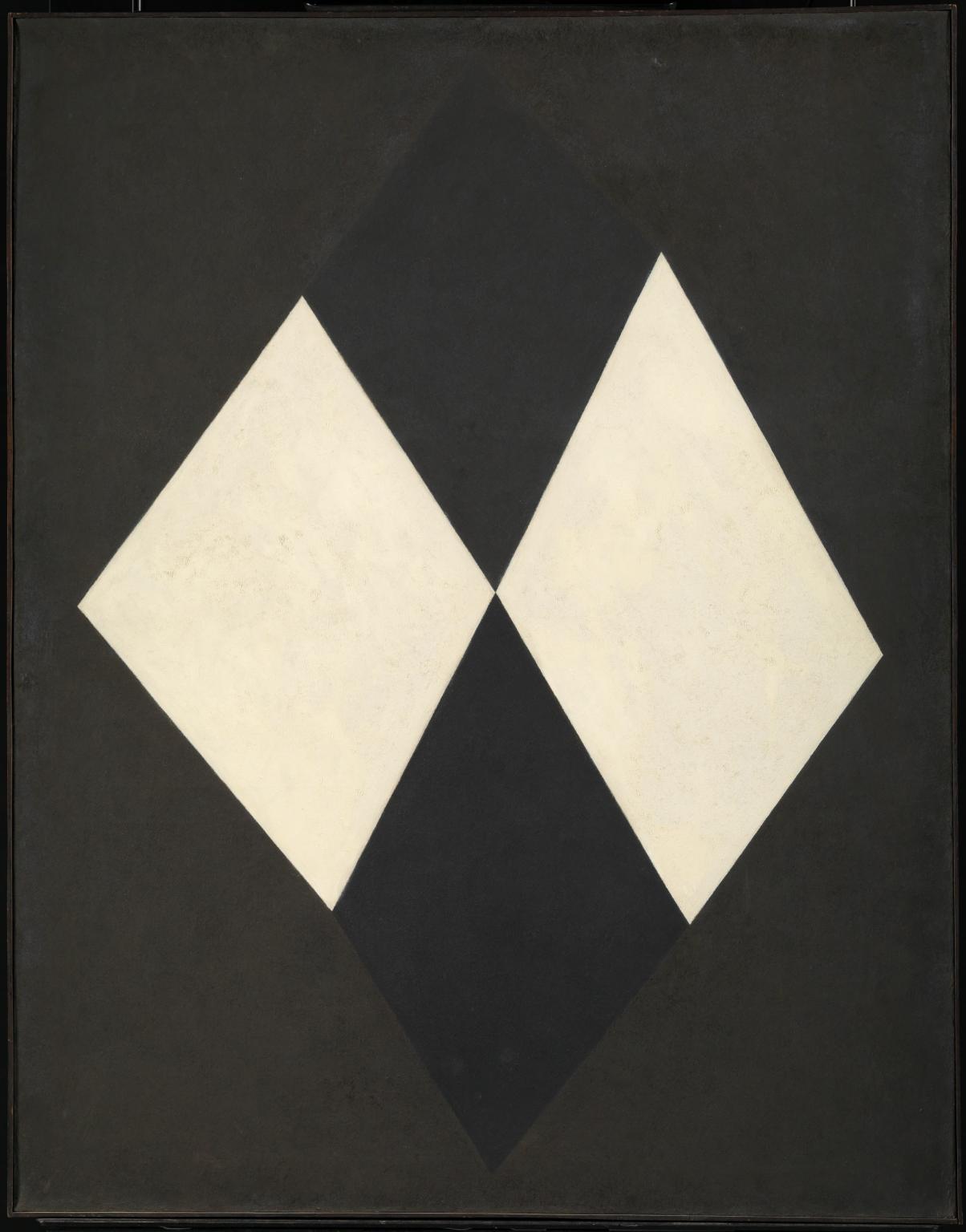
Mira Schendel, Untitled 1963
In this work, geometric figures in subdued colours are suspended in a dark, abstract background. The subtle use of texture and treatment of the surface adds a three-dimensional aspect to the painting. The forms are deliberately asymmetrical and hand-drawn, exemplifying the subtle subversion of European geometric abstraction in Brazilian art through the introduction of organic or destabilising elements. Schendel contributed to the development of Concrete and Neo-concrete art in Brazil during the 1960s, though she remained detached from those groups and developed a distinct and unique body of work.
Gallery label, May 2012
1/30
artworks in Journeys through the Tate Collection
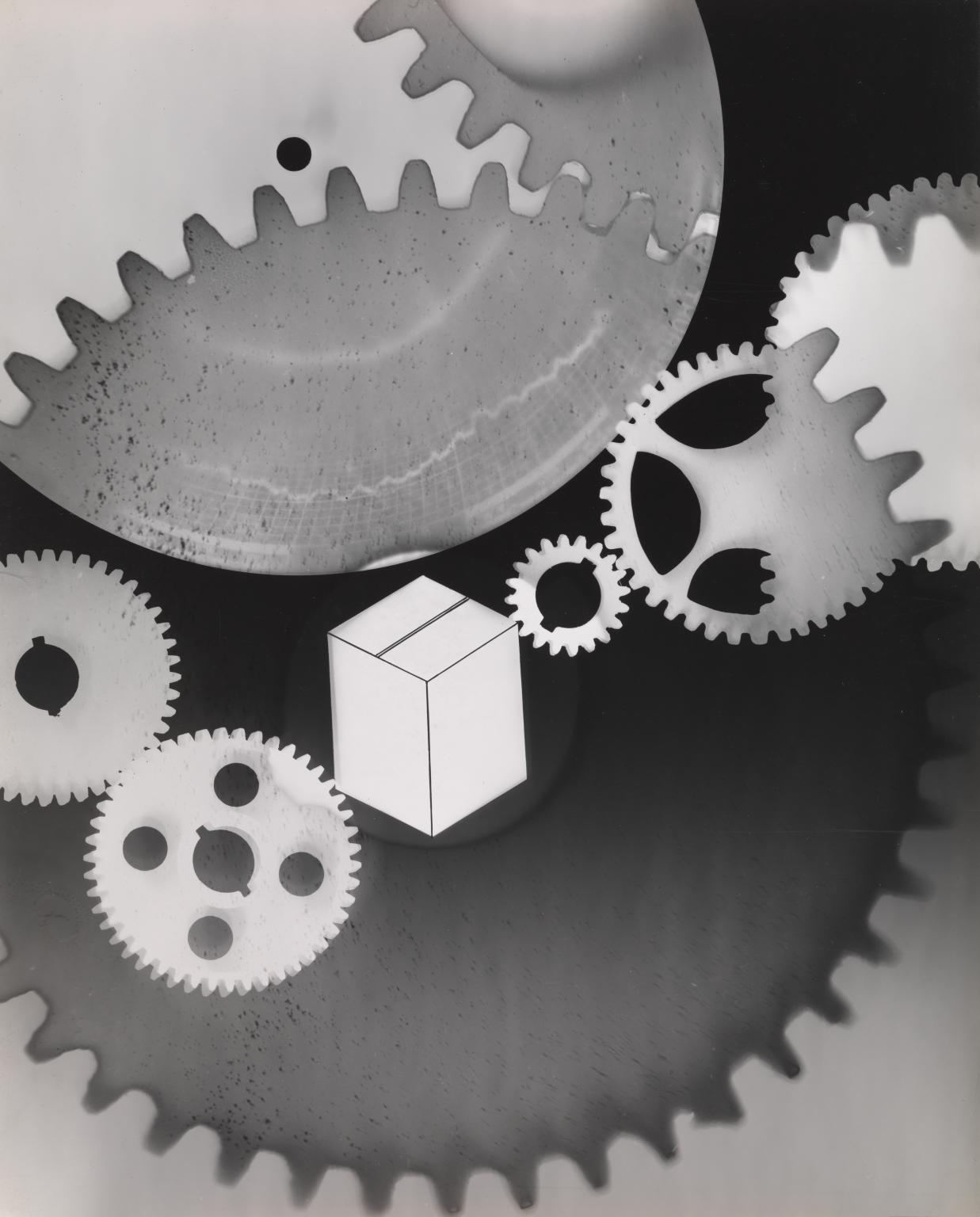
György Kepes, Gears 2 (Gears and Inked Carton) 1939–40
This is one of a large group of photograms and studies in modernist photography in Tate’s collection by the Hungarian-born photographer, painter, designer, teacher and writer, Gyorgy Kepes (see Tate P80532–P80568, T13973–T13975). They date from 1938 to the early 1940s and were made in the United States, where Kepes had emigrated in 1937. Kepes made his earliest photograms in Budapest, taking nature as his starting point, directly recording the process without a camera onto photosensitized surfaces. In the late 1920s Kepes joined the Berlin studio of the Hungarian artist and modernist photographer László Moholy-Nagy (1895–1946). Moholy-Nagy had been a teacher at the Bauhaus School in Germany and was one of the principals in promoting the values of the Bauhaus movement, as well as a pioneer who experimented with a multitude of materials and techniques. Kepes was introduced to the ‘new vision’ provided by the possibilities of modern art techniques while collaborating alongside Moholy-Nagy. He began to experiment with photograms himself – photographic prints made in the darkroom by placing objects directly onto light sensitive paper and exposing the paper to light. Later, he made prints he called ‘photo-drawings’, in which he applied paint to a glass plate that he then used as though it were a negative. Only a few of Kepes’s works from this earlier period survived the artist’s many moves in the 1930s and the Second World War.
2/30
artworks in Journeys through the Tate Collection
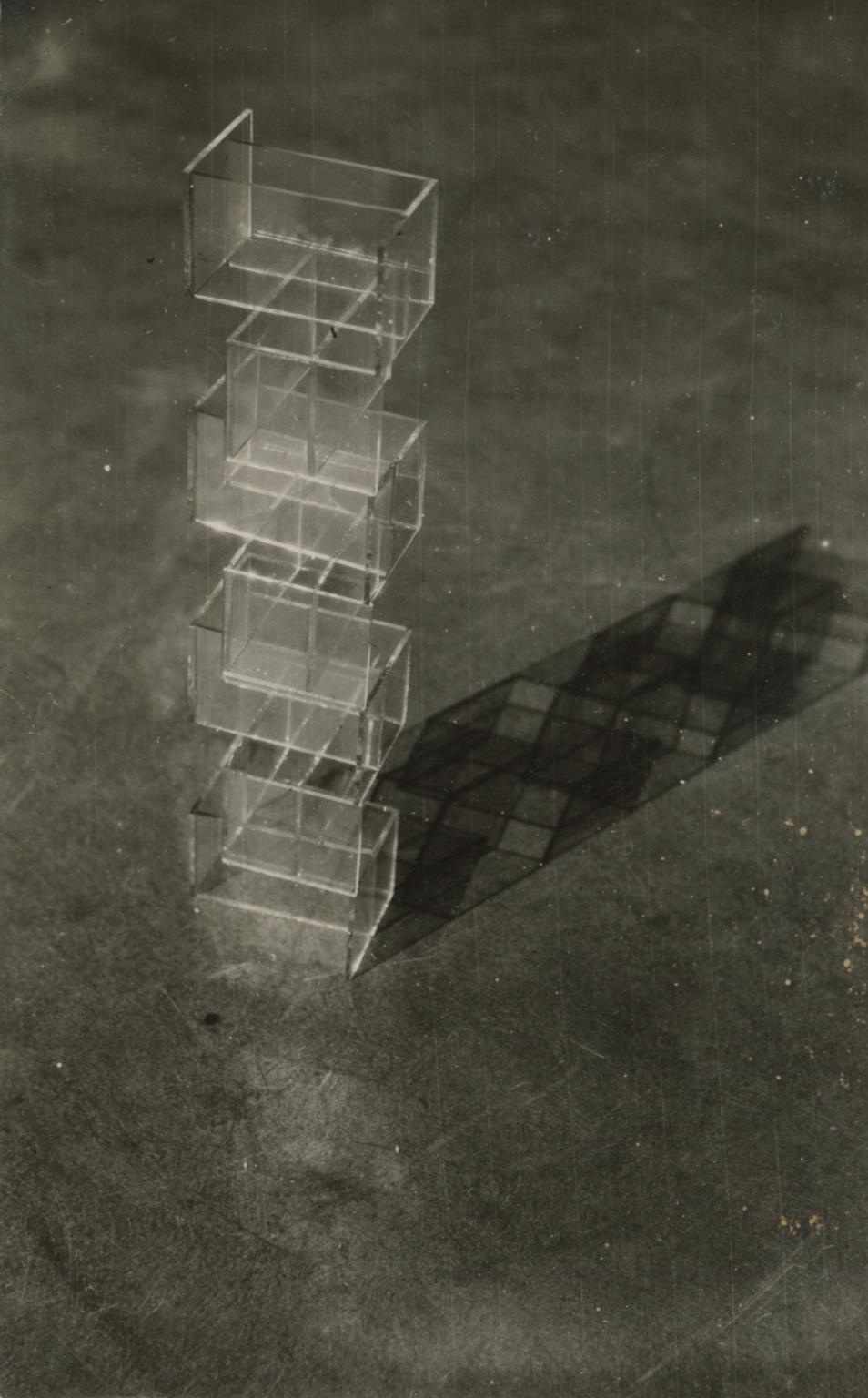
Edmund Collein, Untitled (Material Study, Construction of Glass Plates, Josef Albers’ Preliminary Course, Bauhaus Dessau) c.1927–30
3/30
artworks in Journeys through the Tate Collection

Jannis Kounellis, Untitled 1969
Untitled 1969 consists of seven burlap sacks lined up in an uneven row on the floor, against the wall. Each sack is filled with a different dried pulse or bean: chickpeas, coffee beans, green lentils, green peas, kidney beans, white beans and maize. The top of each sack is rolled back so that the contents can be seen. The sacks slump this way and that, some leaning against each other, some against the wall and some away from it.
4/30
artworks in Journeys through the Tate Collection

Mary Martin, Perspex Group on Orange (B) 1969
This is one of a series of five works that Martin entitled Perspex Group on Orange. For each one she arranged seven pieces of Perspex in a different configuration, assembling them against a large orange square of the same material. The sizes of the different pieces are based on the Fibonacci series – a mathematical sequence in which each successive number is generated by adding together the two previous numbers. ‘One commences with a single cell, or unit, a logical process of growth is applied and the whole, or the effect, is unforeseen until the work is complete’, Martin explained.
Gallery label, January 2019
5/30
artworks in Journeys through the Tate Collection
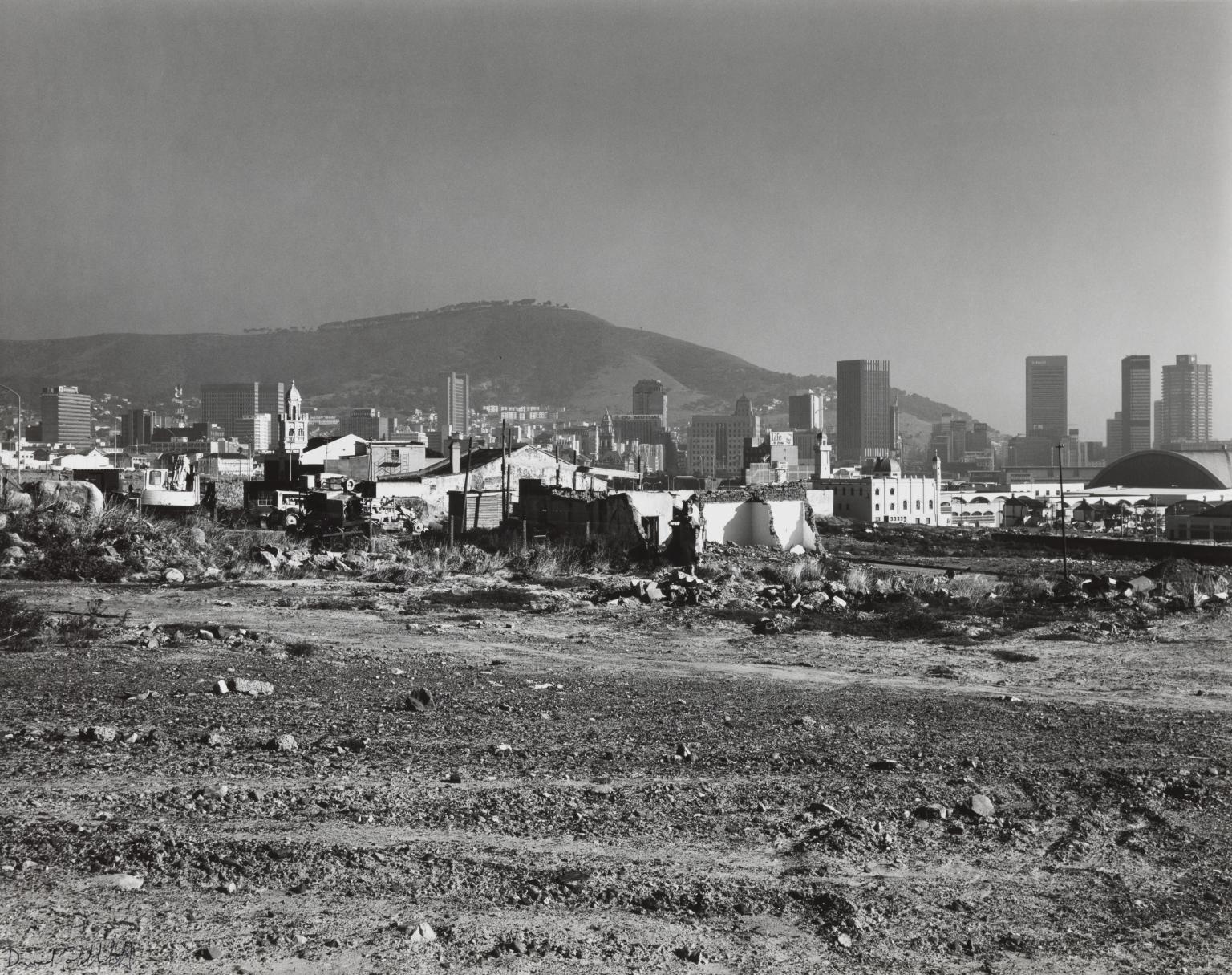
David Goldblatt, The destruction of District Six under the Group Areas Act. Cape Town, Cape. 5 May 1982 1982
6/30
artworks in Journeys through the Tate Collection
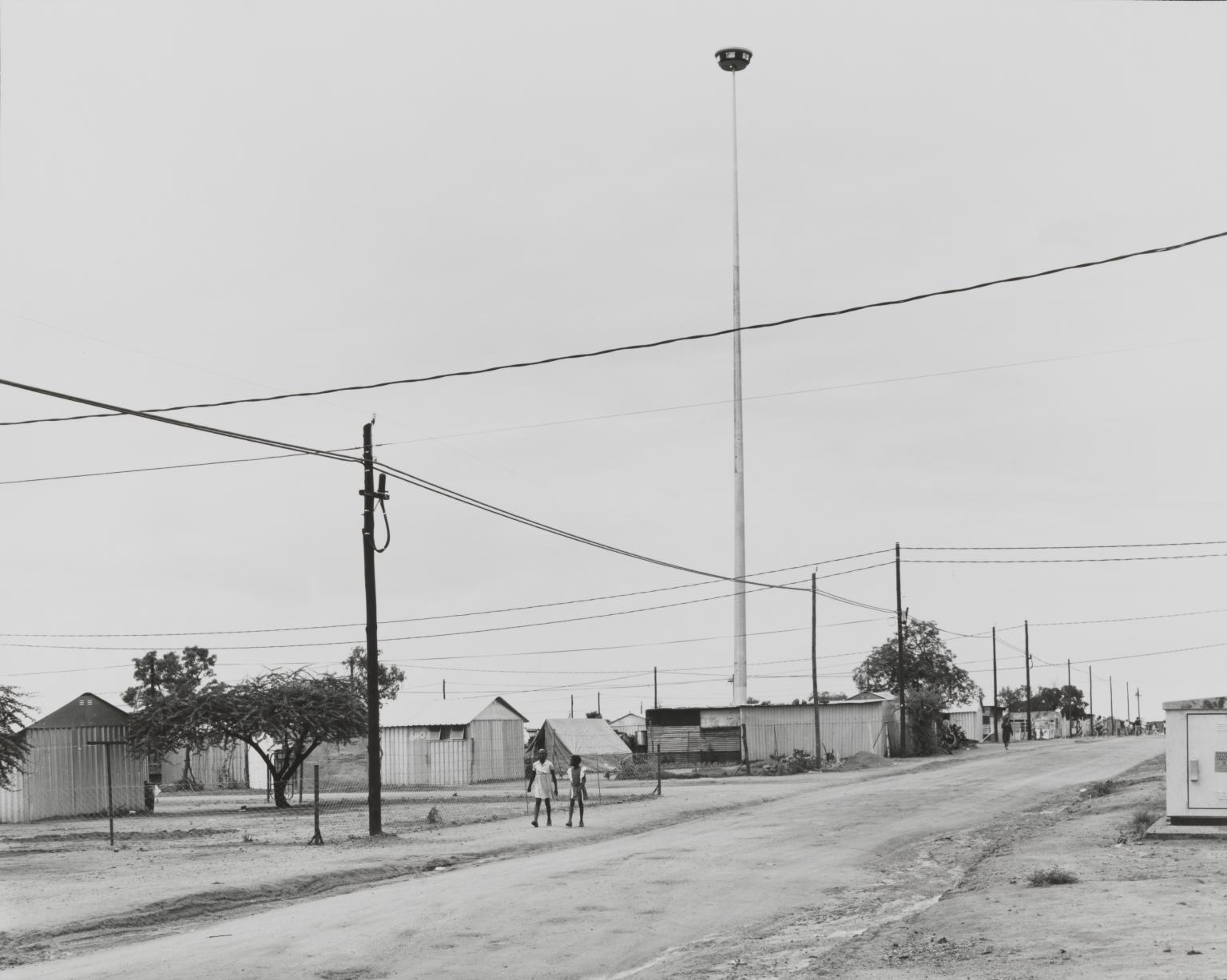
David Goldblatt, The place to which the government wanted the people of Oukasie to move. Letlhabile Removal Camp, Transvaal. 30 November 1986 1986
7/30
artworks in Journeys through the Tate Collection
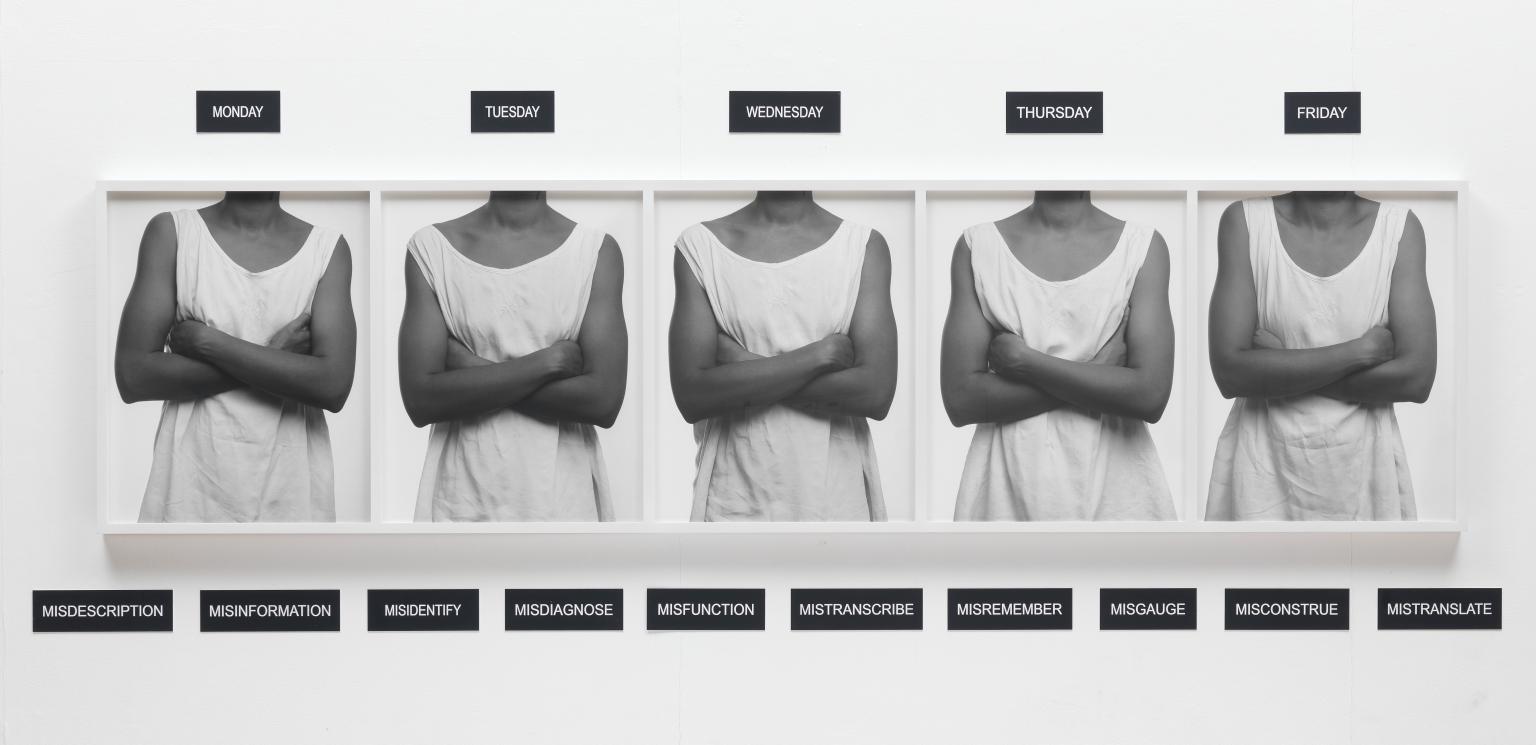
Lorna Simpson, Five Day Forecast 1991
If portraiture is intended to communicate something unique about its subject, Five Day Forecast might be described as an ‘anti-portrait’. The economy of the images, their serial arrangement and the use of black and white recall the conventions of nineteenth-century ethnographic photography, in which the subject becomes a de-individualised representative of a wider group. But in Simpson’s work, rather than being available for scrutiny and categorisation, the figure is photographed cropped so only her torso is visible. In this way, she remains ultimately inaccessible to the viewer.
Gallery label, November 2015
8/30
artworks in Journeys through the Tate Collection
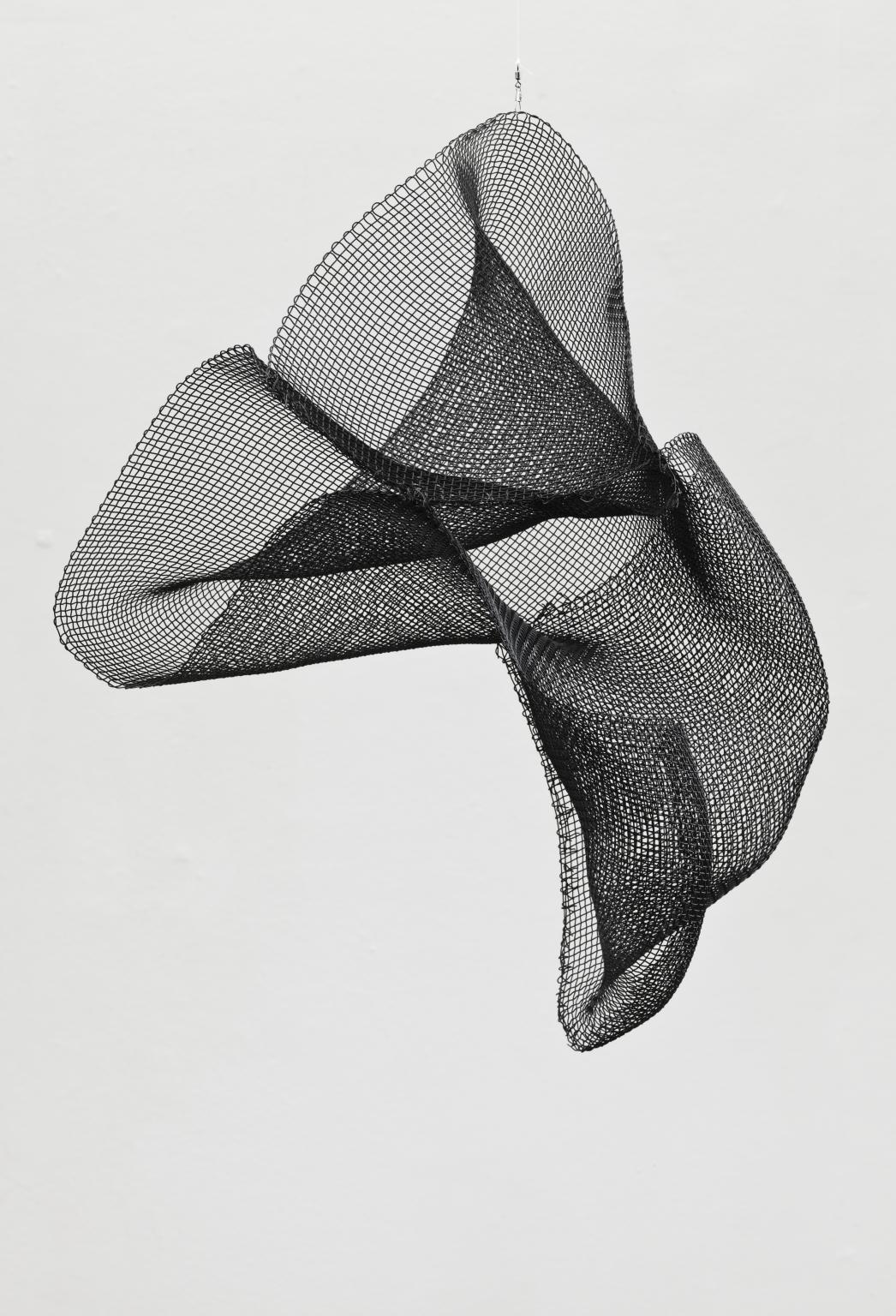
Katsuhiro Yamaguchi, Mesh sculpture 1961
9/30
artworks in Journeys through the Tate Collection

Ivan Picelj, Surface IX 1962
Surface IX 1962 is a square-format wooden relief on a square wooden backboard which has been painted black by the artist. The relief itself is composed of twenty-seven vertical slats of wood of equal height and width, placed adjacent to one another. Each wooden slat has been machine-routed, or turned, creating a pattern of horizontal indentations at varying intervals along the slats. The profile of each moulded strip is undulated, some strips containing as few as thirteen notches, others as many as nineteen. Each profile becomes a different structural element in the constructed relief. Placed side-by-side, the alternating profiles create a sense of rhythm and movement. Surface IX belongs to a body of wooden reliefs that Picelj created between the late 1950s and the early 1960s to which he gave the name ‘surfaces’, differentiating them from each other by using the roman numerical system.
10/30
artworks in Journeys through the Tate Collection
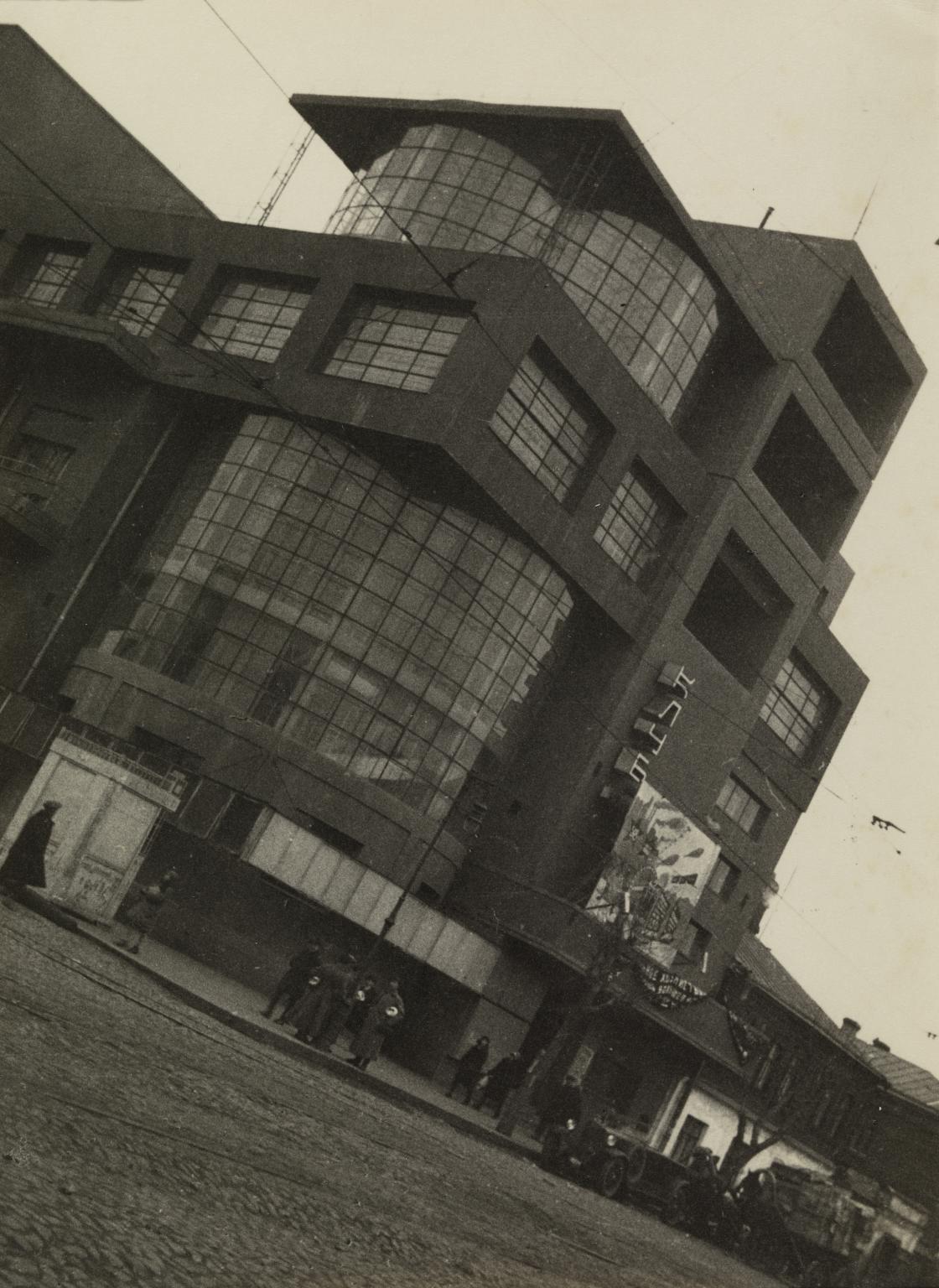
Iwao Yamawaki, Zuyev Workers’ Club Moscow 1931
Born in Fujita, Nagasaki, Iwao Yamawaki studied architecture at the Tokyo School of Arts and after graduating worked as an architect in a construction company. During this time, he took pictures with his 35mm camera to support and document his architectural studies. In 1931 he travelled to Germany to study at the Bauhaus in Dessau and became heavily influenced by László Moholy-Nagy’s idea that photography could open up new ways of seeing the world beyond those available to the human eye. Yamawaki travelled widely in Europe and the Soviet Union, documenting modernist architecture and design, as well as capturing student life at the Bauhaus.
Gallery label, November 2015
11/30
artworks in Journeys through the Tate Collection
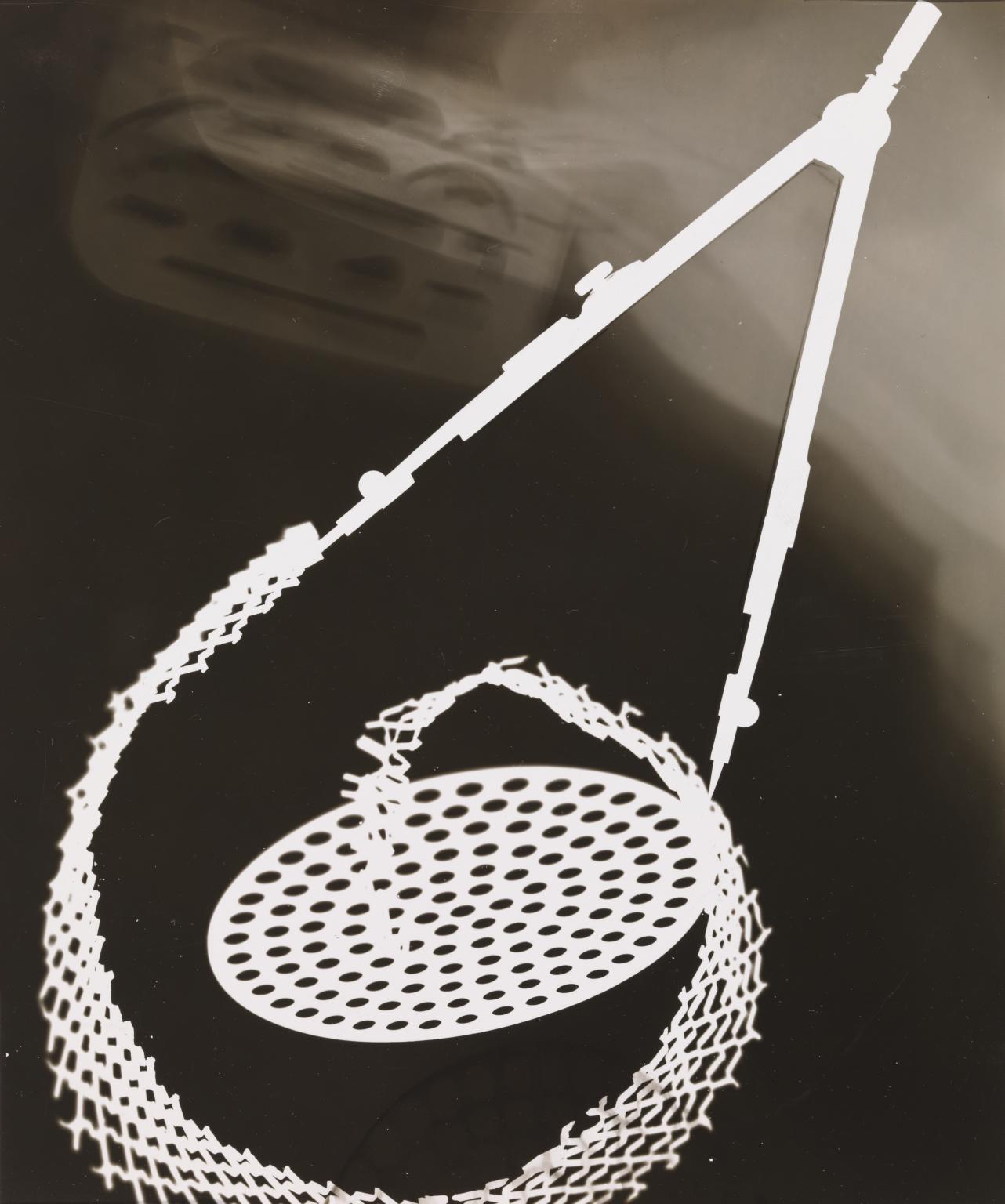
György Kepes, Compass and Strainer Photogram n.d
This is one of a large group of photograms and studies in modernist photography in Tate’s collection by the Hungarian-born photographer, painter, designer, teacher and writer, Gyorgy Kepes (see Tate P80532–P80568, T13973–T13975). They date from 1938 to the early 1940s and were made in the United States, where Kepes had emigrated in 1937. Kepes made his earliest photograms in Budapest, taking nature as his starting point, directly recording the process without a camera onto photosensitized surfaces. In the late 1920s Kepes joined the Berlin studio of the Hungarian artist and modernist photographer László Moholy-Nagy (1895–1946). Moholy-Nagy had been a teacher at the Bauhaus School in Germany and was one of the principals in promoting the values of the Bauhaus movement, as well as a pioneer who experimented with a multitude of materials and techniques. Kepes was introduced to the ‘new vision’ provided by the possibilities of modern art techniques while collaborating alongside Moholy-Nagy. He began to experiment with photograms himself – photographic prints made in the darkroom by placing objects directly onto light sensitive paper and exposing the paper to light. Later, he made prints he called ‘photo-drawings’, in which he applied paint to a glass plate that he then used as though it were a negative. Only a few of Kepes’s works from this earlier period survived the artist’s many moves in the 1930s and the Second World War.
12/30
artworks in Journeys through the Tate Collection
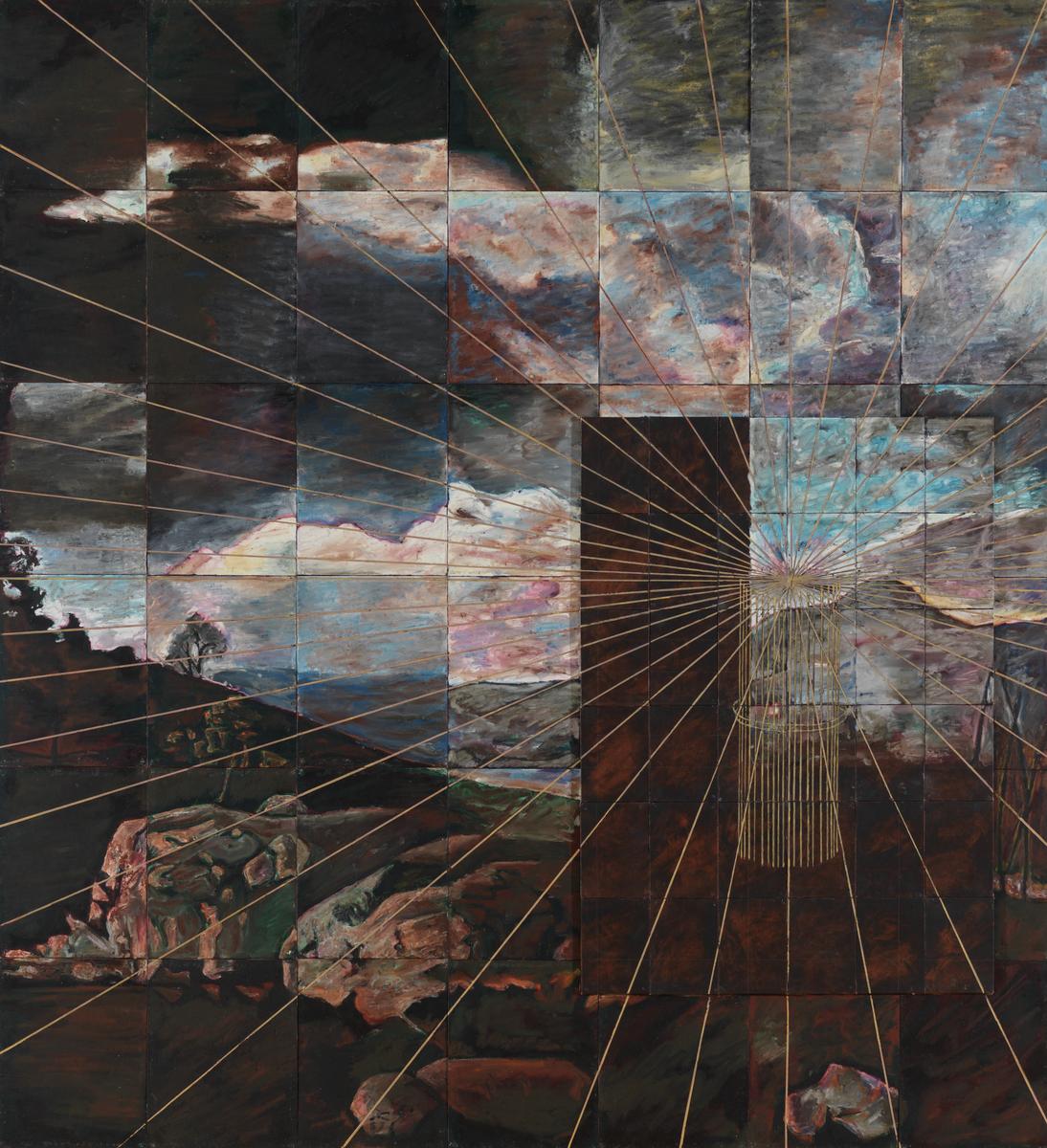
Imants Tillers, Kangaroo Blank 1988
Kangaroo Blank 1988 is a painting that was commissioned by Daniel Thomas, the then director of the Art Gallery of South Australia, Adelaide as the final inclusion in the museum’s exhibition, The Great Australian Art Exhibition 1788–1988 (1988). Comprising seventy-eight canvas boards, numbered 16231 to 16308, an ongoing numbering system the artist has employed in his paintings since 1981, the work draws on a number of references from existing works of art, primarily the painting The Kongouro from New Holland 1770 by British painter George Stubbs (1724–1806), in the collection of the National Maritime Museum, Greenwich, London, and the work of Japanese artist Shusaku Arakawa (1936–2010). George Stubbs was considered the foremost animal painter in Britain during the eighteenth century and was commissioned by Sir Joseph Banks (1743–1820) to paint two paintings of native Australian wildlife (kangaroo and dingo) following his return from Captain James Cook’s first voyage to the Pacific (1768–71), the first British voyage devoted exclusively to scientific discovery. Stubbs was not on the voyage, and painted The Kongouro from New Holland working from written and verbal descriptions, sketches made by the onboard artist Sidney Parkinson, and a kangaroo pelt that Banks had brought back with him. Tillers came across Stubbs’ painting in a publication of Joseph Bank’s Endeavour Journal 1962 (Baume 1988, p.226).
13/30
artworks in Journeys through the Tate Collection
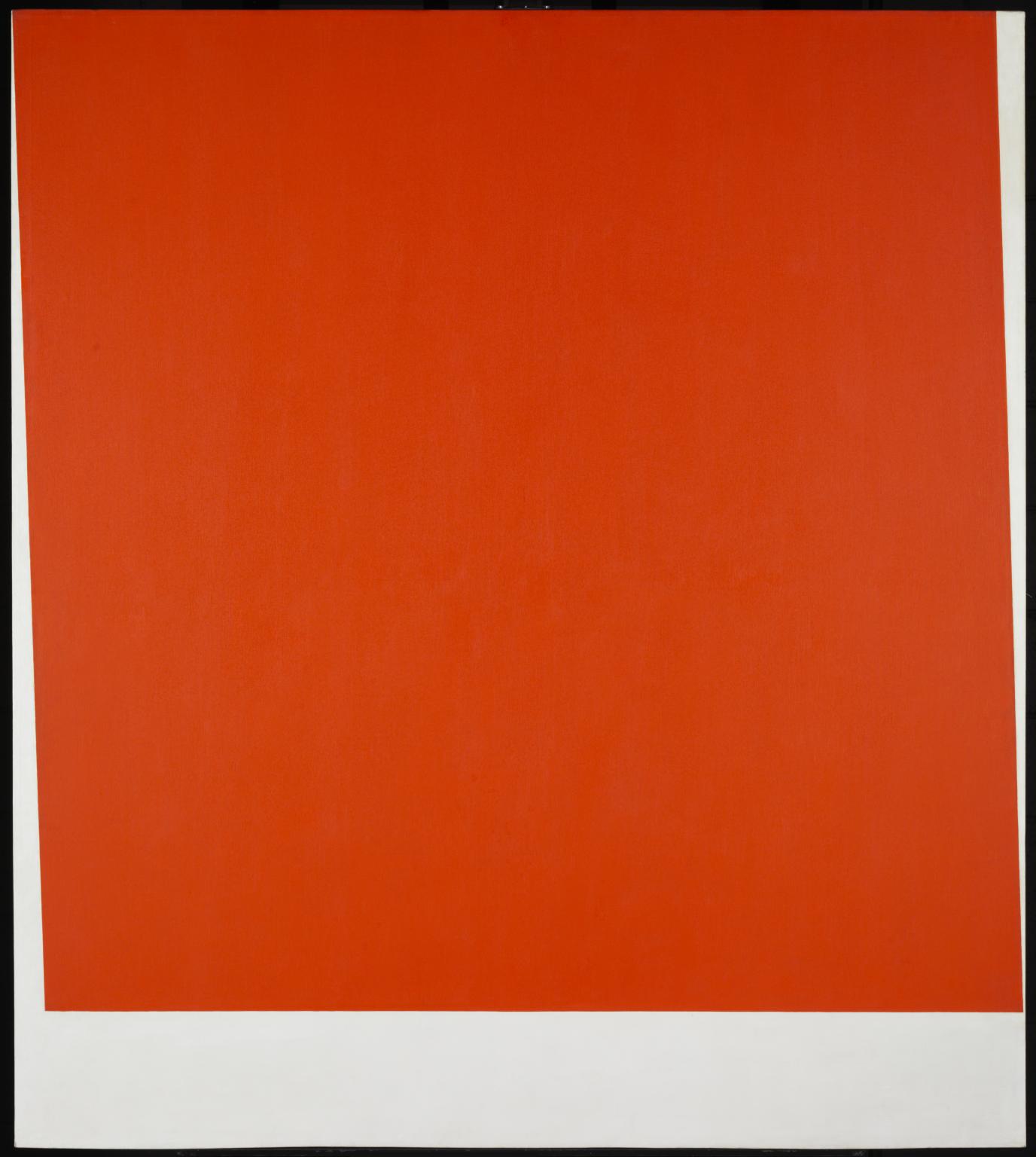
Ellsworth Kelly, Broadway 1958
This painting, one of a series that developed from a small black and white study, is called after the famous avenue in New York. Here the red form can also be read as a 'broad way' receding into the distance, Kelly having cropped the edges of the rectangle to imply perspective. At the same time it appears absolutely flat. Asserting the real, flat nature of painting has been one of Kelly's central concerns. He achieves this here without sacrificing effects of space. The picture plane suggests at once flatness and three dimensions. Other works in the series are titled Wall after New York's Wall Street and 'North River,' another name for New York's Hudson River.
Gallery label, September 2004
14/30
artworks in Journeys through the Tate Collection
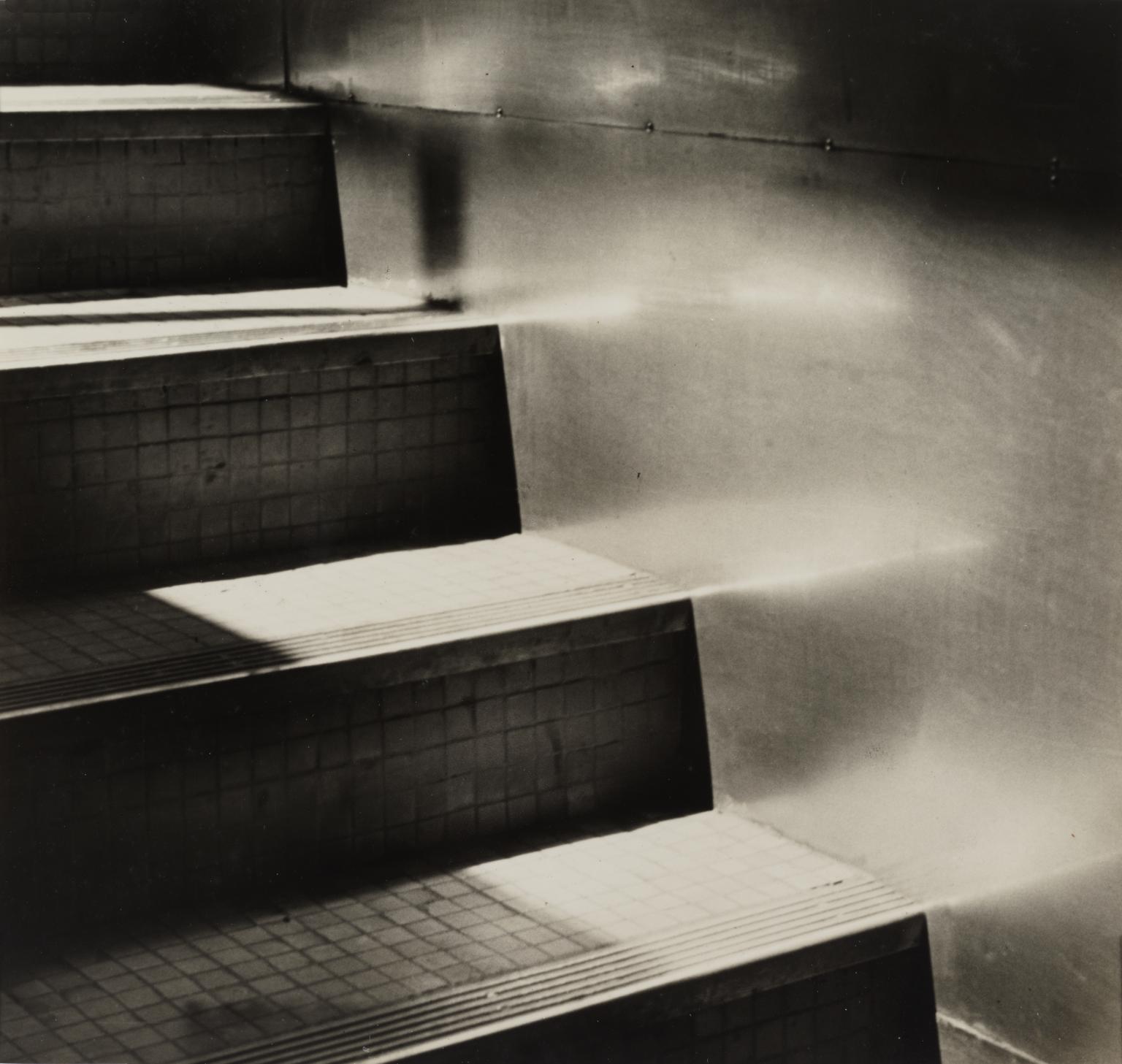
Shikanosuke Yagaki, Stairs 1930–9
Shikanosuke Yagaki was an active member of many of the amateur photography clubs flourishing in Japan in the 1930s, including the Sanwa Bank Photo Club, the Karashishi-kai Photo Group, and the Kyoto Leica Club and his work was widely exhibited. Despite a lack of professional training, Yagaki developed a sophisticated style which combined the influence of European modernism with typical Japanese subjects. His work shows a great understanding of the camera’s potential, playing with movement, perspective, light and shadow.
Gallery label, June 2011
15/30
artworks in Journeys through the Tate Collection
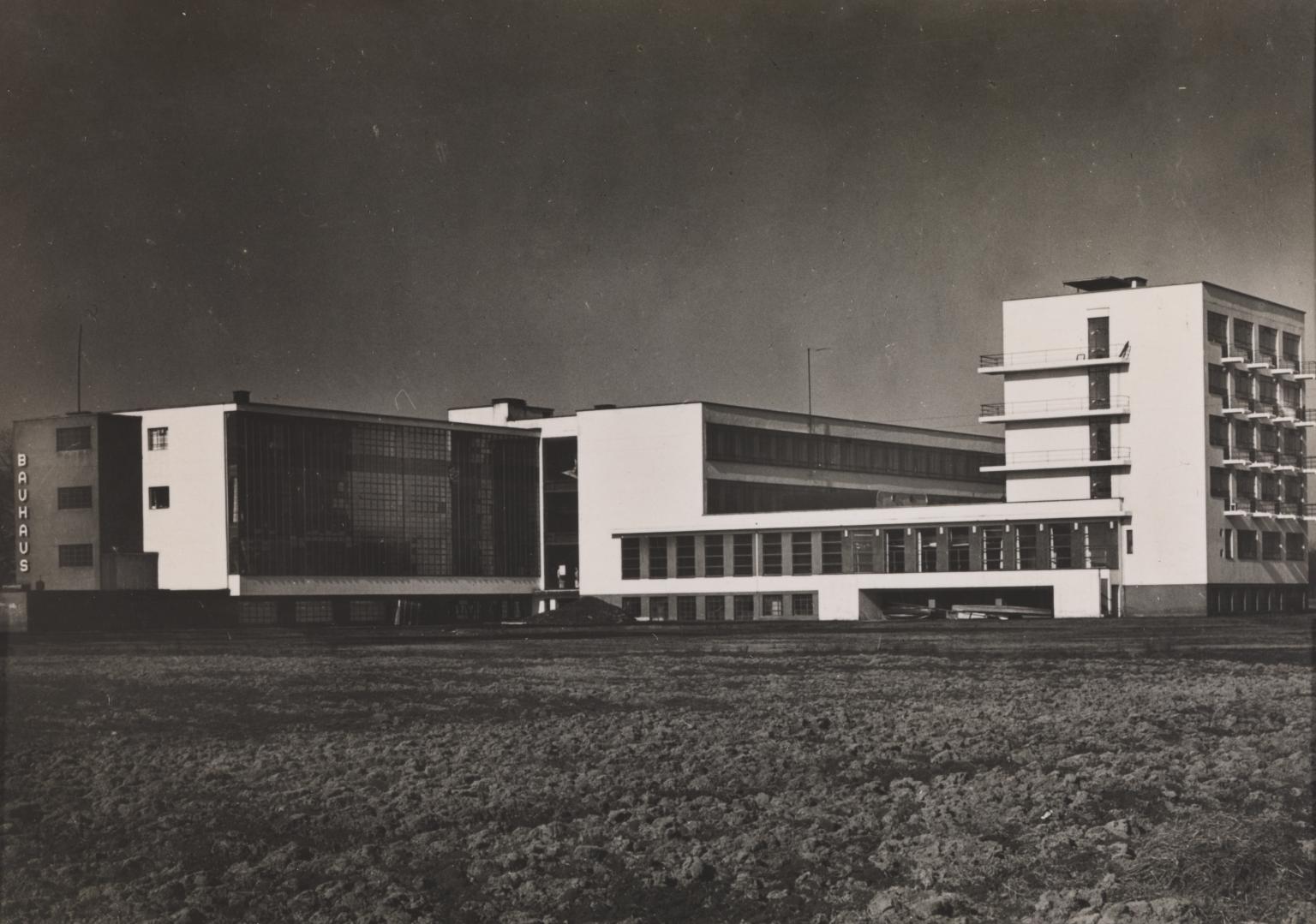
Lucia Moholy, Bauhaus Building, Dessau 1925–6
Lucia Moholy moved to Dessau to accompany her husband László Moholy-Nagy (1895–1946) when he began teaching at the Bauhaus school of art, architecture and design. There she produced many iconic photographs documenting the architecture of the Bauhaus buildings in the mid-1920s.
Gallery label, November 2015
16/30
artworks in Journeys through the Tate Collection
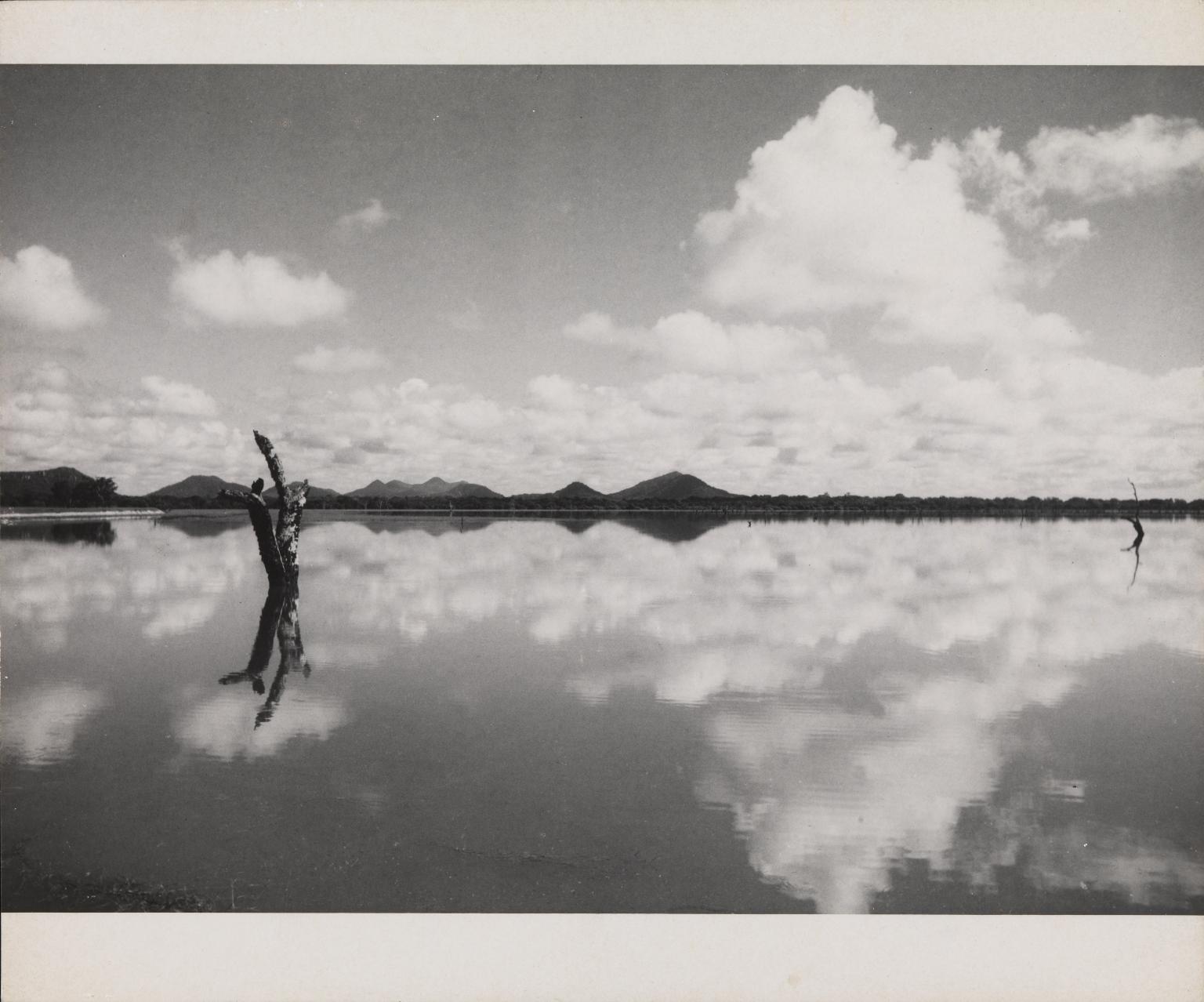
Lionel Wendt, [title not known] c.1933–8
17/30
artworks in Journeys through the Tate Collection

Tadeusz Suminski, Air Heater Rotor, Racibórz Boiler Factory 1962
This is one of nine small black and white silver gelatin photographs in Tate’s collection by the post-war Polish photographer Tadeusz Suminski that were taken in Polish factories. They come from a larger body of work made between 1962 and 1964 for an assignment on new industrial complexes in Poland; Suminski later selected certain images such as these to develop and print privately for inclusion in exhibitions and competitions. The photographs feature closely cropped details of machines and mass-produced industrial products arranged in careful compositions that verge on abstraction. By focusing on serial patterns and contrasts of light and shade, they draw attention to the potential for beauty inherent in the machine-made, industrial environment. The works are titled descriptively according to the factory in which they were taken and the material or machine they depict. Tate’s prints are vintage prints, acquired from the artist’s estate.
18/30
artworks in Journeys through the Tate Collection
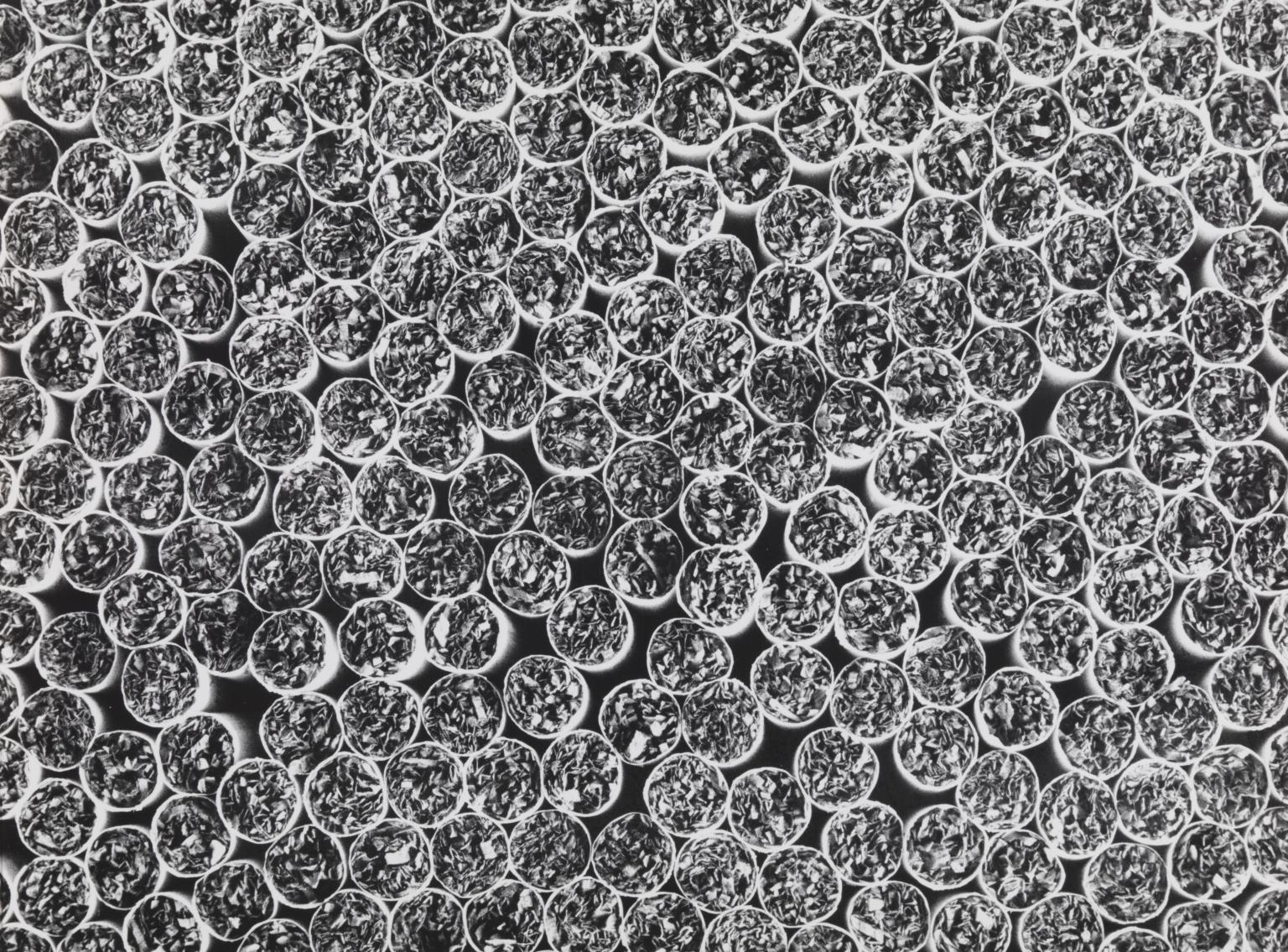
Tadeusz Suminski, Cigarettes, Czyzyny 1962
This is one of nine small black and white silver gelatin photographs in Tate’s collection by the post-war Polish photographer Tadeusz Suminski that were taken in Polish factories. They come from a larger body of work made between 1962 and 1964 for an assignment on new industrial complexes in Poland; Suminski later selected certain images such as these to develop and print privately for inclusion in exhibitions and competitions. The photographs feature closely cropped details of machines and mass-produced industrial products arranged in careful compositions that verge on abstraction. By focusing on serial patterns and contrasts of light and shade, they draw attention to the potential for beauty inherent in the machine-made, industrial environment. The works are titled descriptively according to the factory in which they were taken and the material or machine they depict. Tate’s prints are vintage prints, acquired from the artist’s estate.
19/30
artworks in Journeys through the Tate Collection
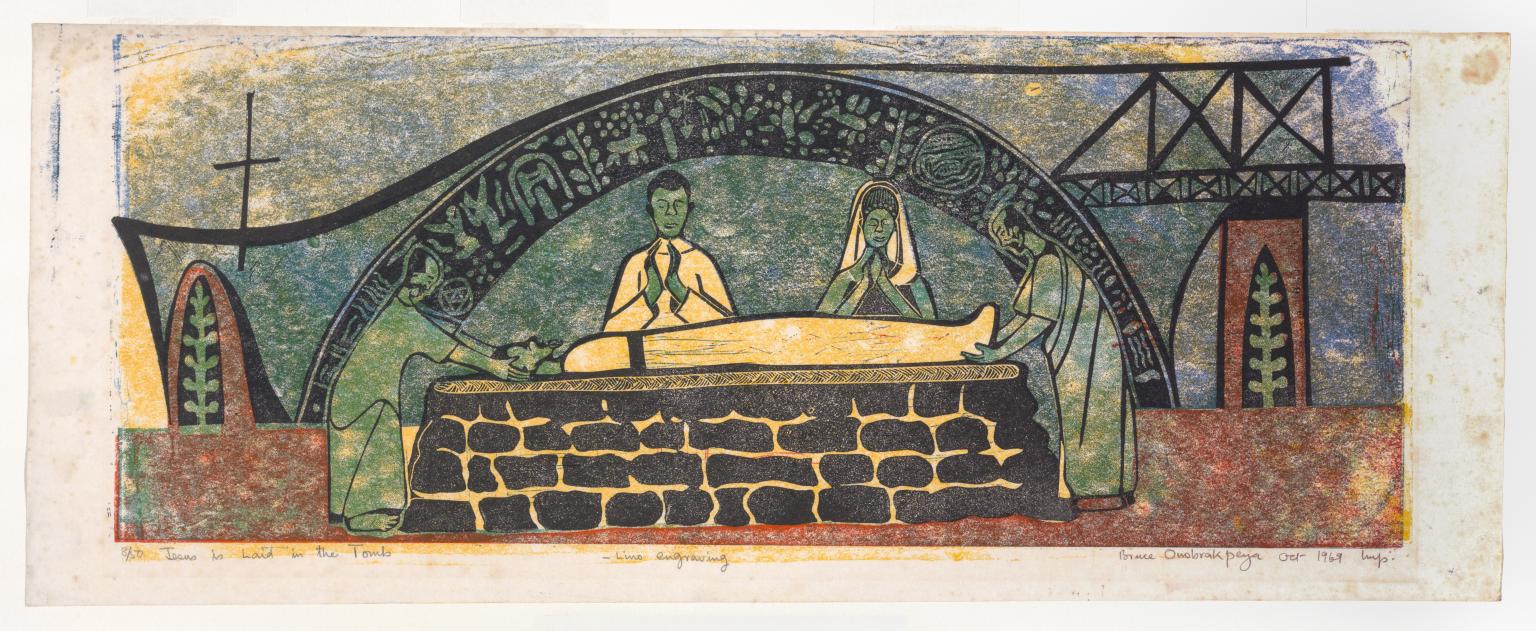
Bruce Onobrakpeya, Jesus is laid in the tomb 1969
This is one in a series by Nigerian artist Bruce Onobrakpeya comprising fourteen linocut prints on paper in an elongated landscape format. The subject is a biblical one, with each of the prints depicting a different moment from Jesus’ last days on Earth as a man, beginning with his condemnation by Pontius Pilate and ending with his crucifixion and laying in the tomb. The episodes portrayed – known in Christian theology as The Stations of the Cross – are precisely detailed and dramatised in Onobrakpeya’s prints, but have been placed within an African setting. The apostles wear vividly patterned local Adire prints and those restraining Jesus appear to be wearing colonial-era police uniform. The overall palette of the series is blue and green, with hints of yellow and highlights in orange. Geometric shapes abound, recalling patterns found on traditional Nigerian textiles and architecture. While these forms structure the compositions, they also extend onto the crosses that feature prominently in many of the images. The prints are individually titled as follows: Jesus is Condemned to Death, Jesus Takes his Cross, Jesus Falls the First Time, Jesus Meets his Mother, Simon of Cyrene Helps Jesus, Veronica Wipes Jesus’ Face, Jesus Falls the Second Time, Jesus and the Women of Jerusalem, Jesus Falls the Third Time, Jesus’ Clothes are Torn Off, Jesus is Nailed to the Cross, Jesus Dies on the Cross, Jesus is Taken from the Cross and Jesus is Laid in the Tomb. Thirteen of the prints are number eight in an edition of fifty. Jesus Falls the First Time is number eight in an edition of forty-eight. Complete sets of the prints are rare; although they can be shown individually, they are ideally shown all together as they were in the inaugural exhibition at Tate Modern, London in 2001, Century City: Art and Culture in the Modern Metropolis.
20/30
artworks in Journeys through the Tate Collection
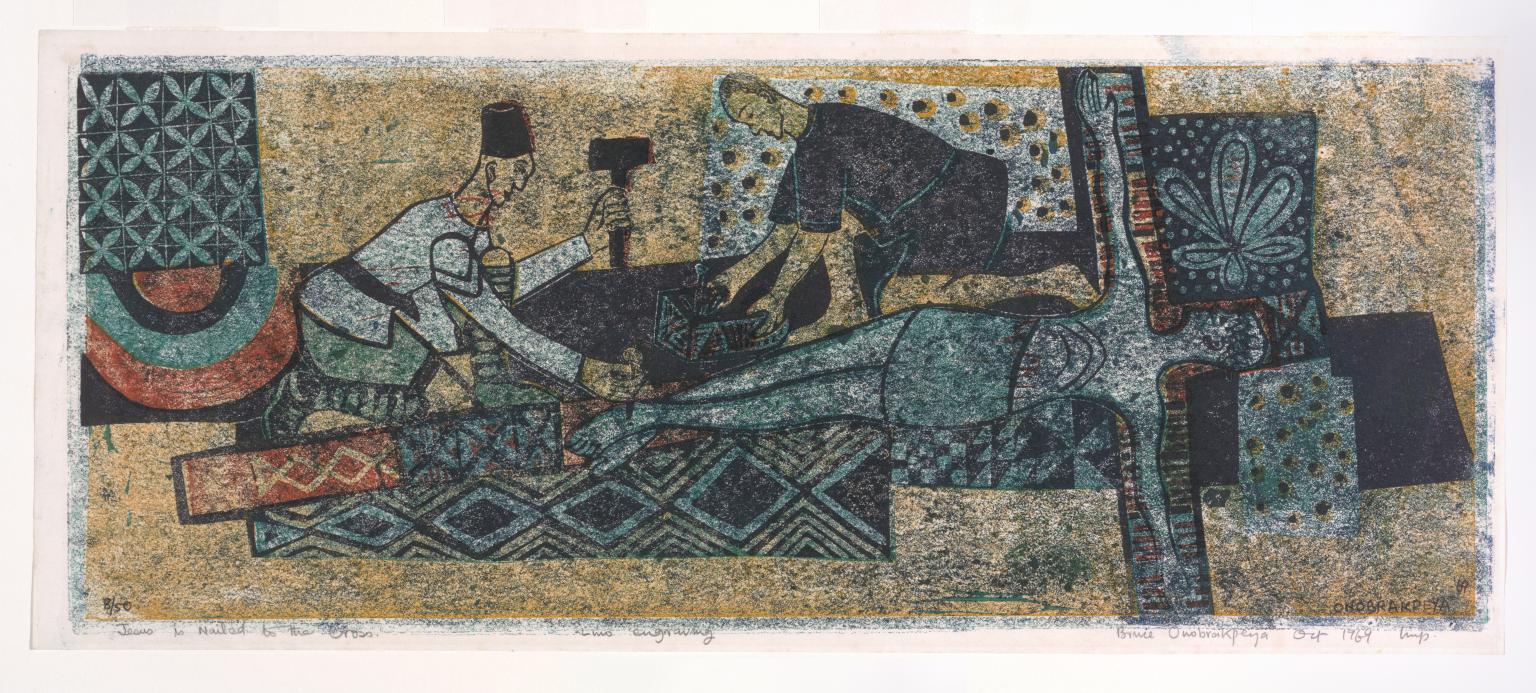
Bruce Onobrakpeya, Jesus is nailed to the cross 1969
This is one in a series by Nigerian artist Bruce Onobrakpeya comprising fourteen linocut prints on paper in an elongated landscape format. The subject is a biblical one, with each of the prints depicting a different moment from Jesus’ last days on Earth as a man, beginning with his condemnation by Pontius Pilate and ending with his crucifixion and laying in the tomb. The episodes portrayed – known in Christian theology as The Stations of the Cross – are precisely detailed and dramatised in Onobrakpeya’s prints, but have been placed within an African setting. The apostles wear vividly patterned local Adire prints and those restraining Jesus appear to be wearing colonial-era police uniform. The overall palette of the series is blue and green, with hints of yellow and highlights in orange. Geometric shapes abound, recalling patterns found on traditional Nigerian textiles and architecture. While these forms structure the compositions, they also extend onto the crosses that feature prominently in many of the images. The prints are individually titled as follows: Jesus is Condemned to Death, Jesus Takes his Cross, Jesus Falls the First Time, Jesus Meets his Mother, Simon of Cyrene Helps Jesus, Veronica Wipes Jesus’ Face, Jesus Falls the Second Time, Jesus and the Women of Jerusalem, Jesus Falls the Third Time, Jesus’ Clothes are Torn Off, Jesus is Nailed to the Cross, Jesus Dies on the Cross, Jesus is Taken from the Cross and Jesus is Laid in the Tomb. Thirteen of the prints are number eight in an edition of fifty. Jesus Falls the First Time is number eight in an edition of forty-eight. Complete sets of the prints are rare; although they can be shown individually, they are ideally shown all together as they were in the inaugural exhibition at Tate Modern, London in 2001, Century City: Art and Culture in the Modern Metropolis.
21/30
artworks in Journeys through the Tate Collection

Bruce Onobrakpeya, Jesus is taken from the cross 1969
This is one in a series by Nigerian artist Bruce Onobrakpeya comprising fourteen linocut prints on paper in an elongated landscape format. The subject is a biblical one, with each of the prints depicting a different moment from Jesus’ last days on Earth as a man, beginning with his condemnation by Pontius Pilate and ending with his crucifixion and laying in the tomb. The episodes portrayed – known in Christian theology as The Stations of the Cross – are precisely detailed and dramatised in Onobrakpeya’s prints, but have been placed within an African setting. The apostles wear vividly patterned local Adire prints and those restraining Jesus appear to be wearing colonial-era police uniform. The overall palette of the series is blue and green, with hints of yellow and highlights in orange. Geometric shapes abound, recalling patterns found on traditional Nigerian textiles and architecture. While these forms structure the compositions, they also extend onto the crosses that feature prominently in many of the images. The prints are individually titled as follows: Jesus is Condemned to Death, Jesus Takes his Cross, Jesus Falls the First Time, Jesus Meets his Mother, Simon of Cyrene Helps Jesus, Veronica Wipes Jesus’ Face, Jesus Falls the Second Time, Jesus and the Women of Jerusalem, Jesus Falls the Third Time, Jesus’ Clothes are Torn Off, Jesus is Nailed to the Cross, Jesus Dies on the Cross, Jesus is Taken from the Cross and Jesus is Laid in the Tomb. Thirteen of the prints are number eight in an edition of fifty. Jesus Falls the First Time is number eight in an edition of forty-eight. Complete sets of the prints are rare; although they can be shown individually, they are ideally shown all together as they were in the inaugural exhibition at Tate Modern, London in 2001, Century City: Art and Culture in the Modern Metropolis.
22/30
artworks in Journeys through the Tate Collection
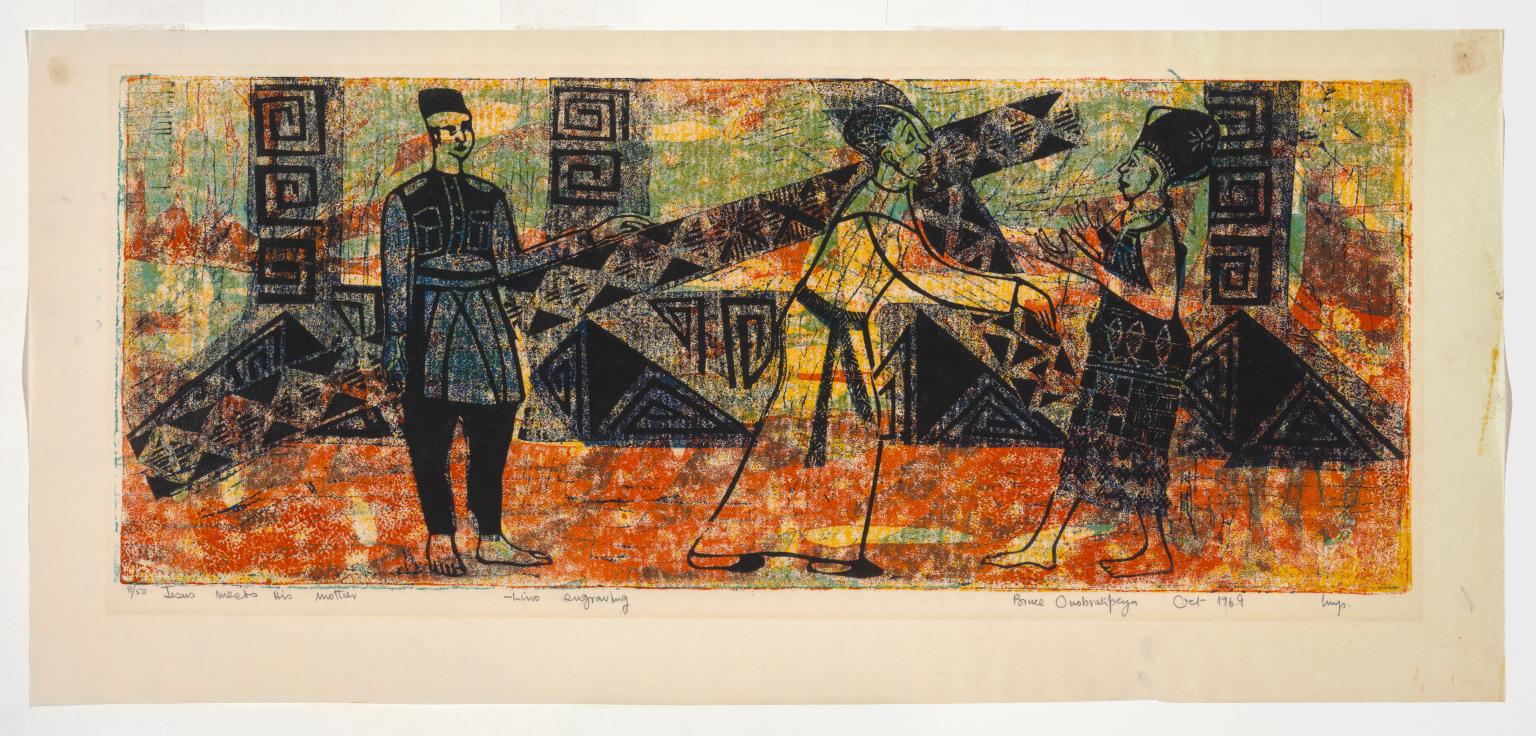
Bruce Onobrakpeya, Jesus meets his mother 1969
This is one in a series by Nigerian artist Bruce Onobrakpeya comprising fourteen linocut prints on paper in an elongated landscape format. The subject is a biblical one, with each of the prints depicting a different moment from Jesus’ last days on Earth as a man, beginning with his condemnation by Pontius Pilate and ending with his crucifixion and laying in the tomb. The episodes portrayed – known in Christian theology as The Stations of the Cross – are precisely detailed and dramatised in Onobrakpeya’s prints, but have been placed within an African setting. The apostles wear vividly patterned local Adire prints and those restraining Jesus appear to be wearing colonial-era police uniform. The overall palette of the series is blue and green, with hints of yellow and highlights in orange. Geometric shapes abound, recalling patterns found on traditional Nigerian textiles and architecture. While these forms structure the compositions, they also extend onto the crosses that feature prominently in many of the images. The prints are individually titled as follows: Jesus is Condemned to Death, Jesus Takes his Cross, Jesus Falls the First Time, Jesus Meets his Mother, Simon of Cyrene Helps Jesus, Veronica Wipes Jesus’ Face, Jesus Falls the Second Time, Jesus and the Women of Jerusalem, Jesus Falls the Third Time, Jesus’ Clothes are Torn Off, Jesus is Nailed to the Cross, Jesus Dies on the Cross, Jesus is Taken from the Cross and Jesus is Laid in the Tomb. Thirteen of the prints are number eight in an edition of fifty. Jesus Falls the First Time is number eight in an edition of forty-eight. Complete sets of the prints are rare; although they can be shown individually, they are ideally shown all together as they were in the inaugural exhibition at Tate Modern, London in 2001, Century City: Art and Culture in the Modern Metropolis.
23/30
artworks in Journeys through the Tate Collection
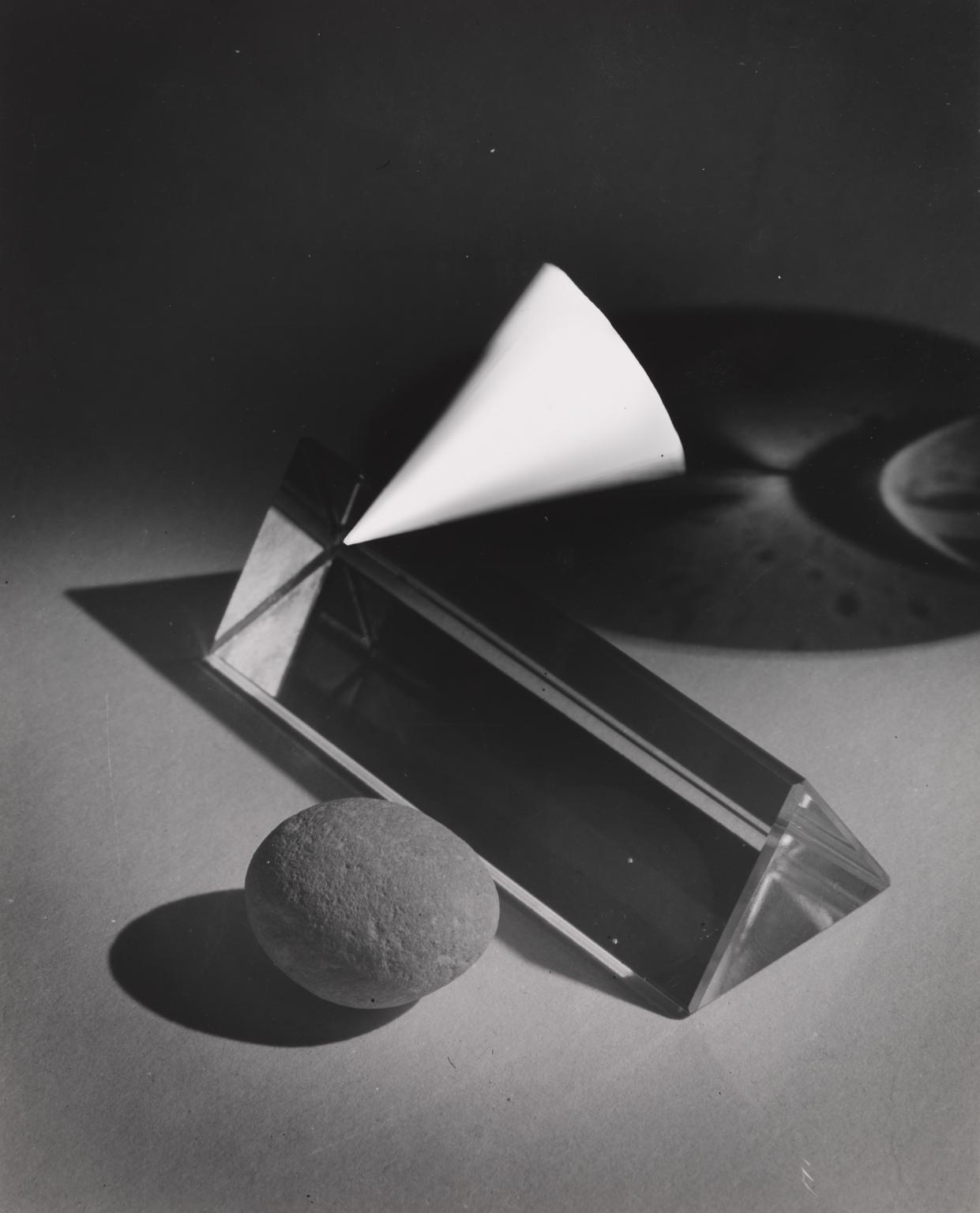
György Kepes, Cone, Prism, Rock c.1939–40
This is one of a large group of photograms and studies in modernist photography in Tate’s collection by the Hungarian-born photographer, painter, designer, teacher and writer, Gyorgy Kepes (see Tate P80532–P80568, T13973–T13975). They date from 1938 to the early 1940s and were made in the United States, where Kepes had emigrated in 1937. Kepes made his earliest photograms in Budapest, taking nature as his starting point, directly recording the process without a camera onto photosensitized surfaces. In the late 1920s Kepes joined the Berlin studio of the Hungarian artist and modernist photographer László Moholy-Nagy (1895–1946). Moholy-Nagy had been a teacher at the Bauhaus School in Germany and was one of the principals in promoting the values of the Bauhaus movement, as well as a pioneer who experimented with a multitude of materials and techniques. Kepes was introduced to the ‘new vision’ provided by the possibilities of modern art techniques while collaborating alongside Moholy-Nagy. He began to experiment with photograms himself – photographic prints made in the darkroom by placing objects directly onto light sensitive paper and exposing the paper to light. Later, he made prints he called ‘photo-drawings’, in which he applied paint to a glass plate that he then used as though it were a negative. Only a few of Kepes’s works from this earlier period survived the artist’s many moves in the 1930s and the Second World War.
24/30
artworks in Journeys through the Tate Collection
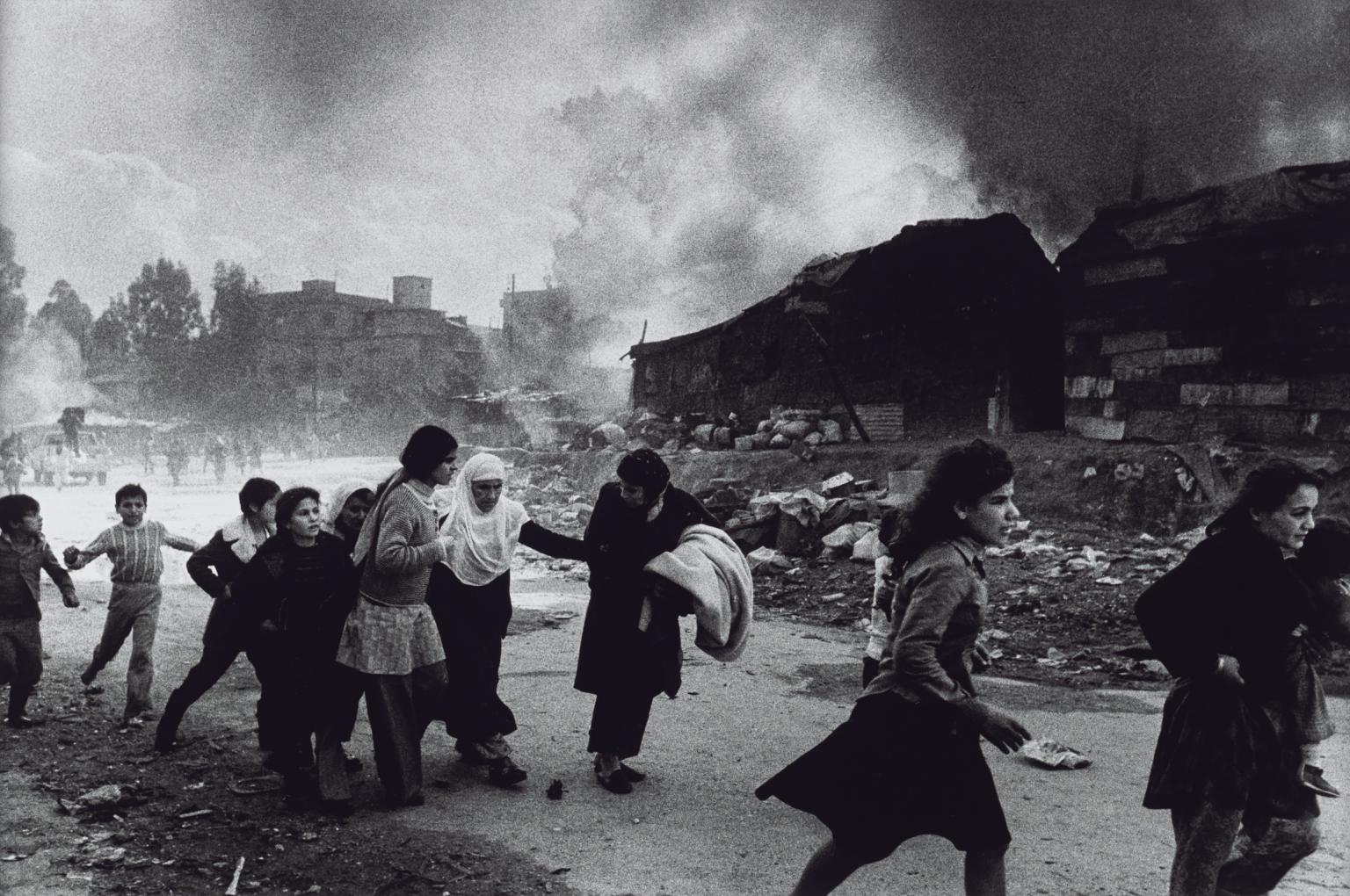
Sir Don McCullin CBE, Palestinian Refugees Fleeing East Beirut Massacre 1976, printed 2013
25/30
artworks in Journeys through the Tate Collection
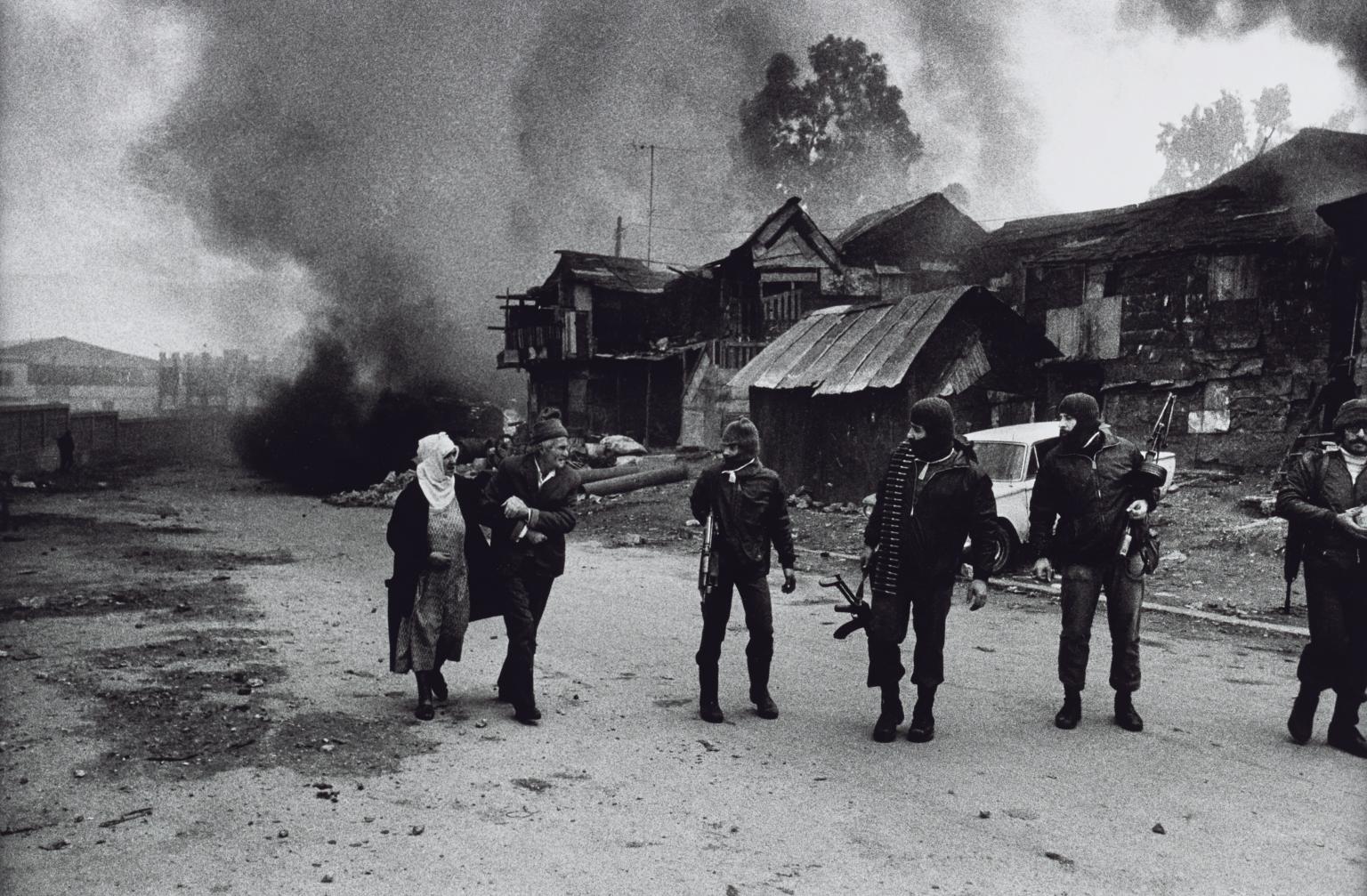
Sir Don McCullin CBE, An Old Palestinian Couple Allowed to Leave the Massacre, Karantina, East Beirut 1976, printed 2013
26/30
artworks in Journeys through the Tate Collection
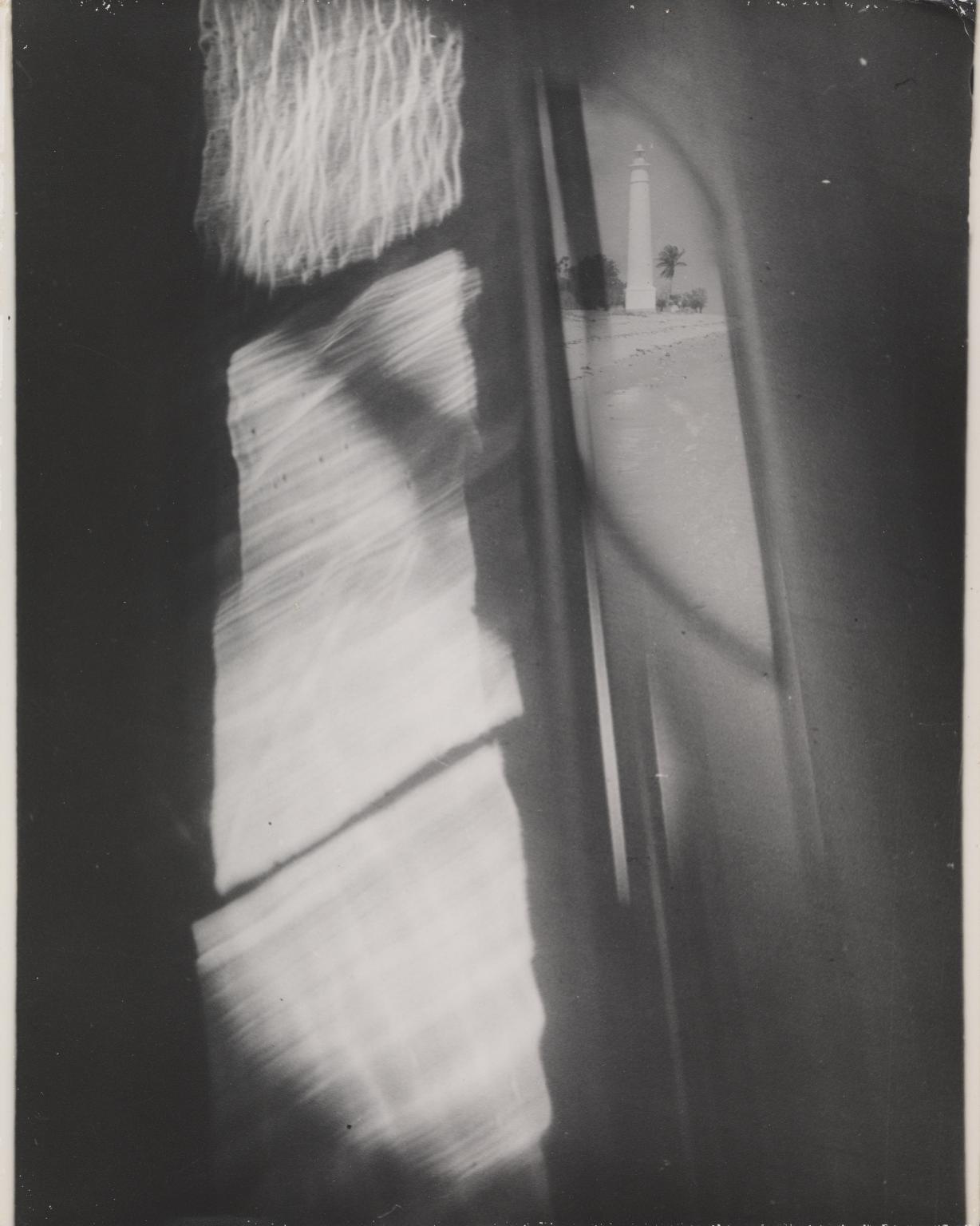
Lionel Wendt, [title not known] c.1933–8
27/30
artworks in Journeys through the Tate Collection
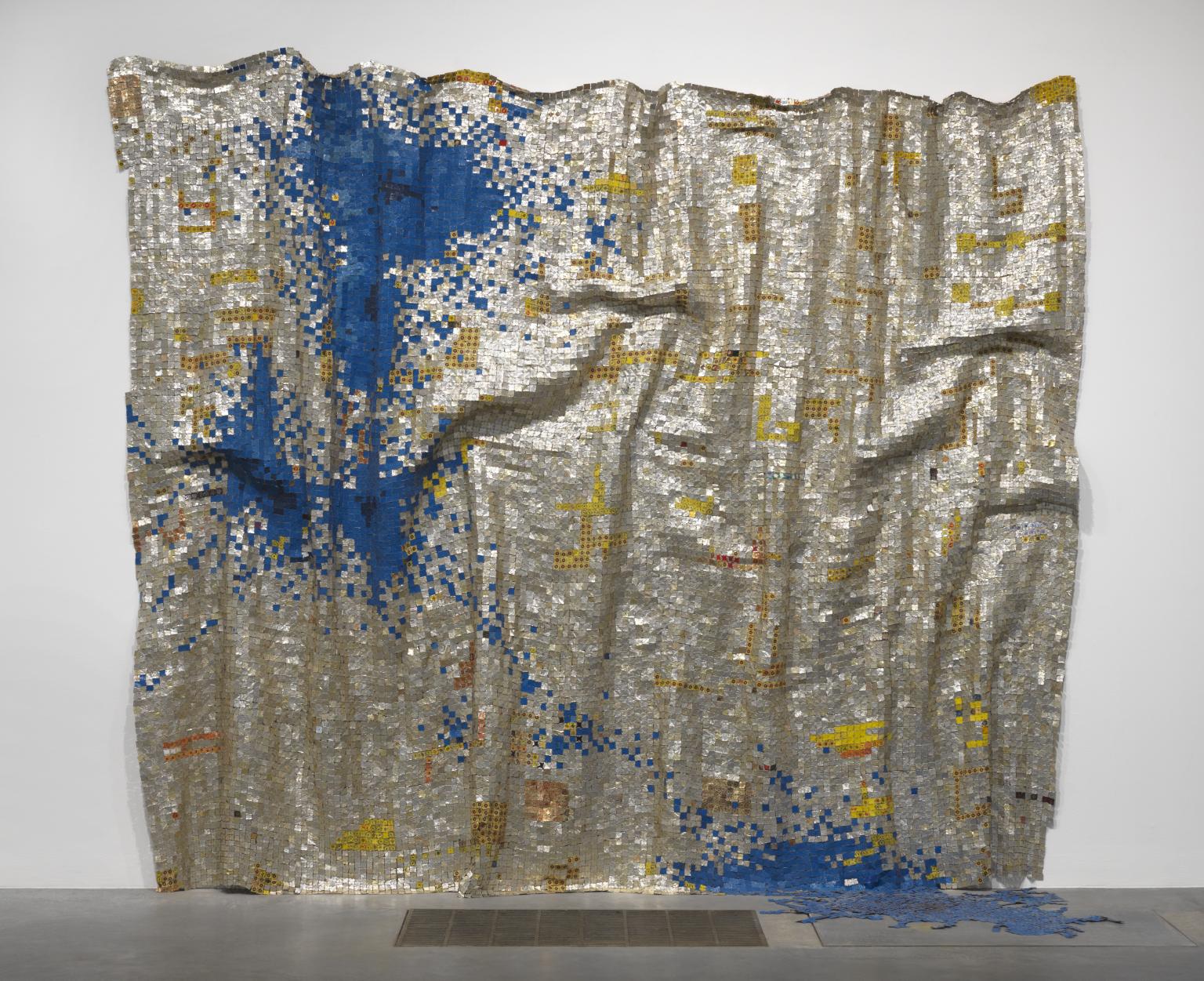
El Anatsui, Ink Splash II 2012
Ink Splash II resembles an abstract painting. However the illusion of swift, gestural brushstrokes and splashes has been created through a painstaking process of weaving flattened bottle tops together with copper wire. The artist explains, ‘the most important thing is the transformation. The fact that these media, each identifying a brand of drink, are no longer going back to serve the same role but are elements that could generate some reflection, some thinking, or just some wonder…[T]hey are removed from their accustomed, functional context into a new one, and they bring along their histories and identities.’
Gallery label, January 2016
28/30
artworks in Journeys through the Tate Collection
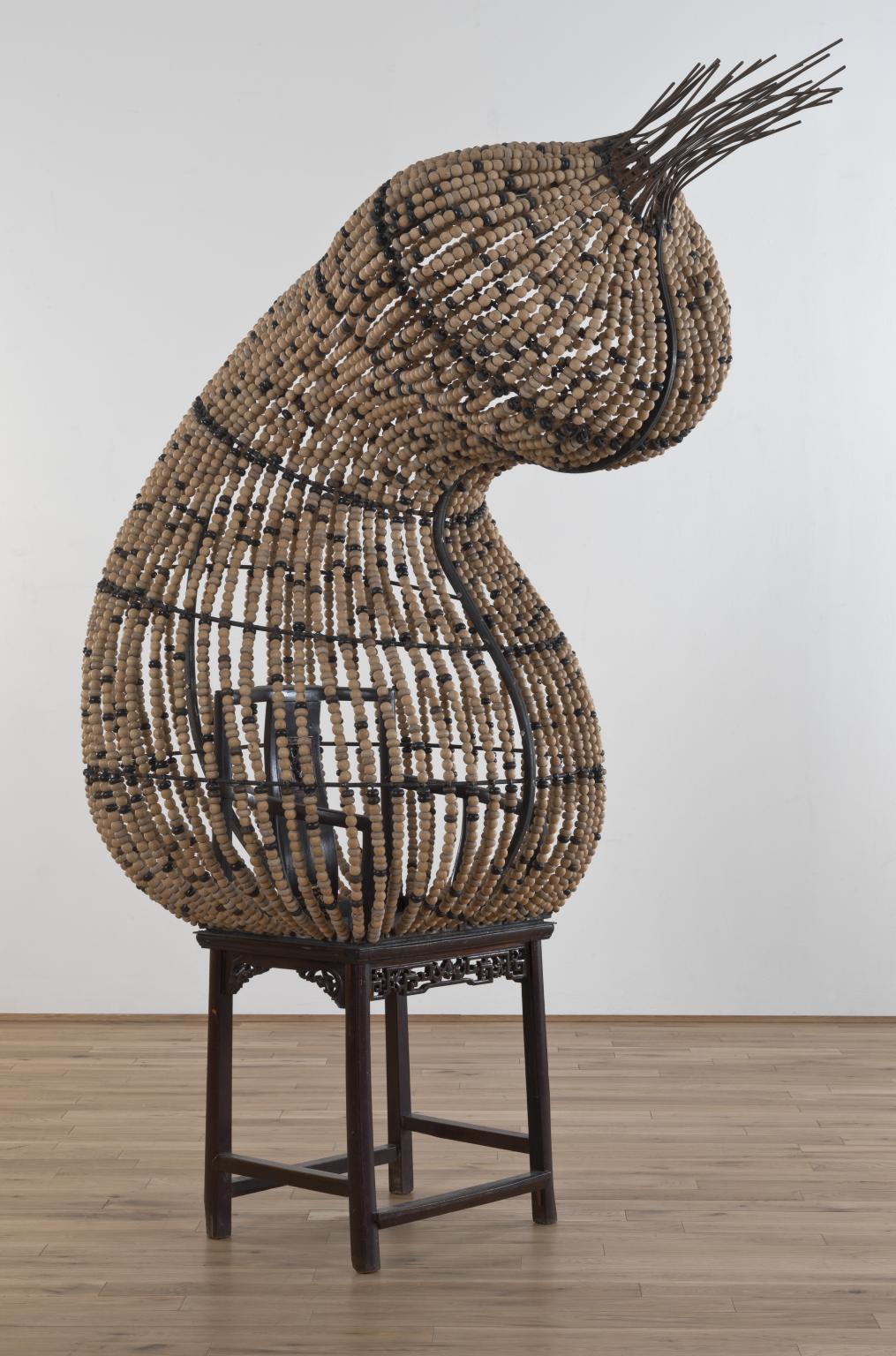
Chen Zhen, Cocon du Vide 2000
Chen Zhen lived and worked mainly between Shanghai, New York and Paris, and his work reflects this constant shifting between cultures, which the artist called ‘transexperience’. In his sculptures and installations he typically assembled obsolete everyday objects, particularly old furniture and candles, sometimes in combination with fragments of technology and consumer goods. This work belongs to a series of sculptures made between 1999 and 2000, sharing the title Cocon du Vide (‘empty cocoon’) and featuring chrysalis-like forms made from Chinese abacus and Buddhist rosary beads threaded onto metal frames.
Gallery label, June 2013
29/30
artworks in Journeys through the Tate Collection
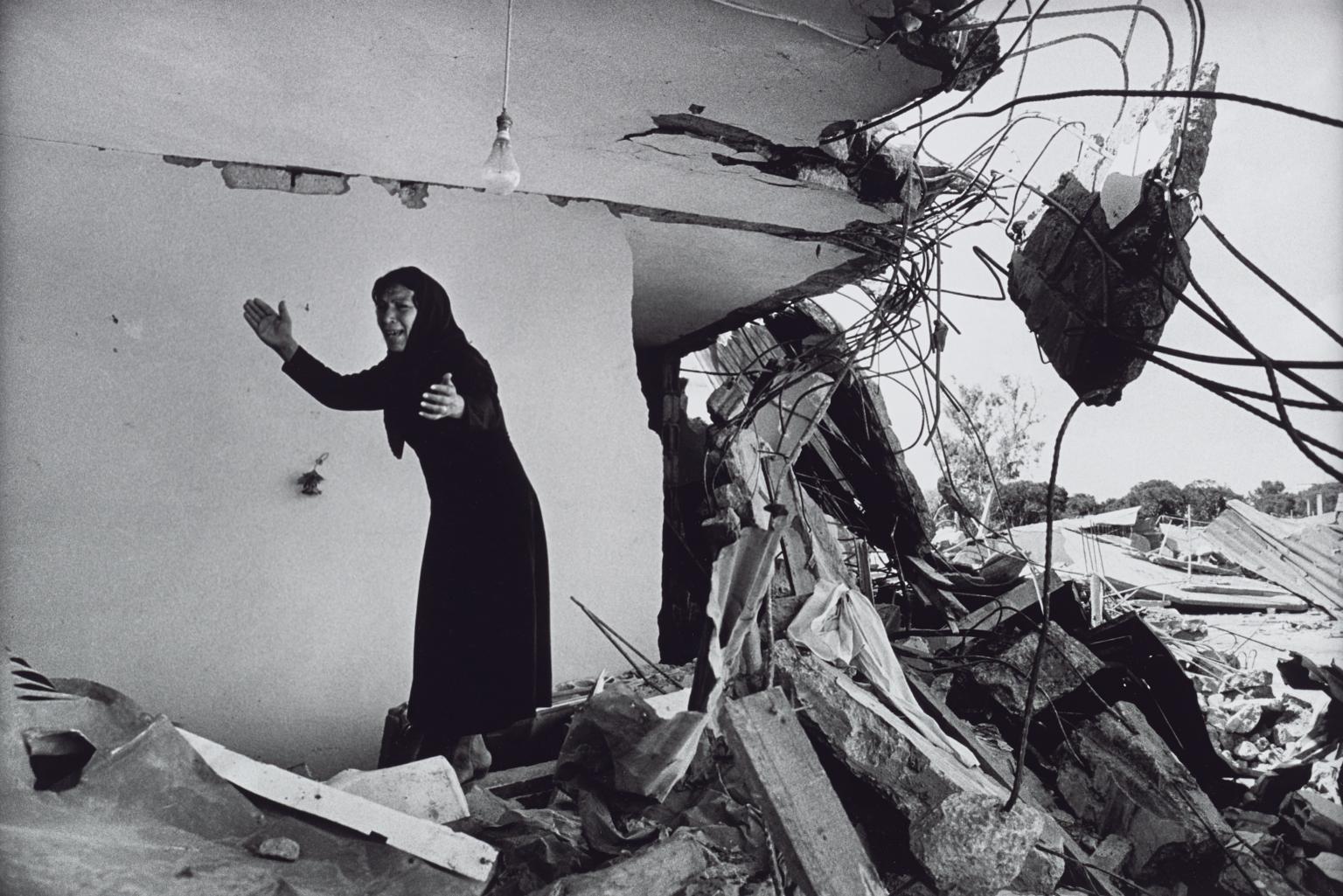
Sir Don McCullin CBE, A Palestinian Mother in Her Destroyed House, Sabra Camp 1982, printed 2013
30/30
artworks in Journeys through the Tate Collection
Art in this room
















![P80212: [title not known]](https://media.tate.org.uk/art/images/work/P/P80/P80212_10.jpg)









![P80213: [title not known]](https://media.tate.org.uk/art/images/work/P/P80/P80213_10.jpg)



You've viewed 6/30 artworks
You've viewed 30/30 artworks
